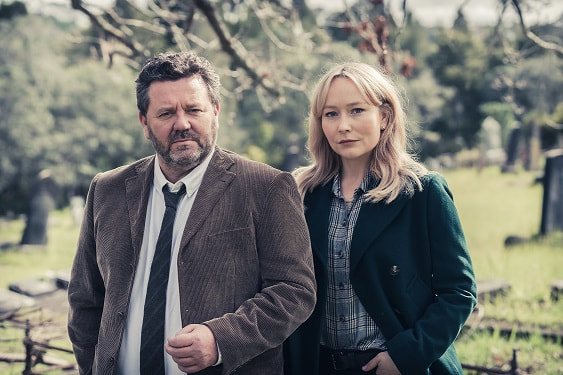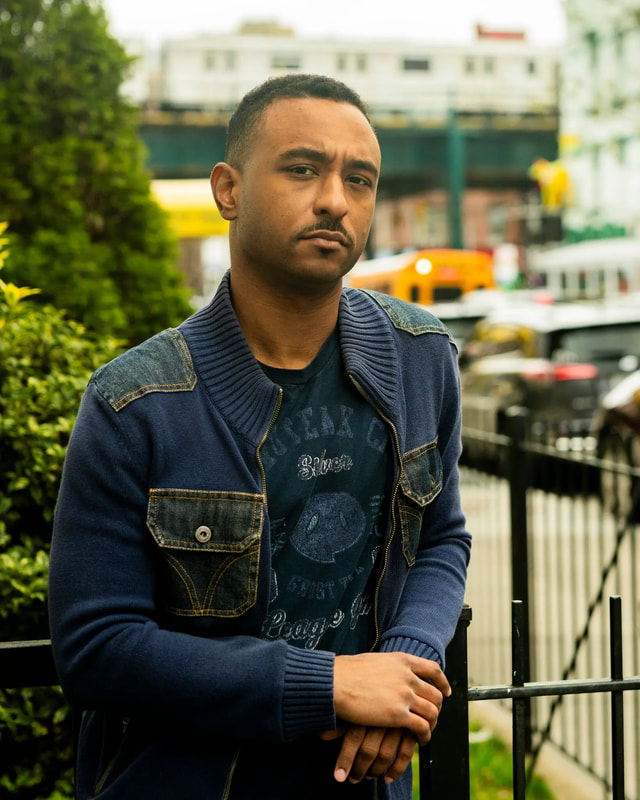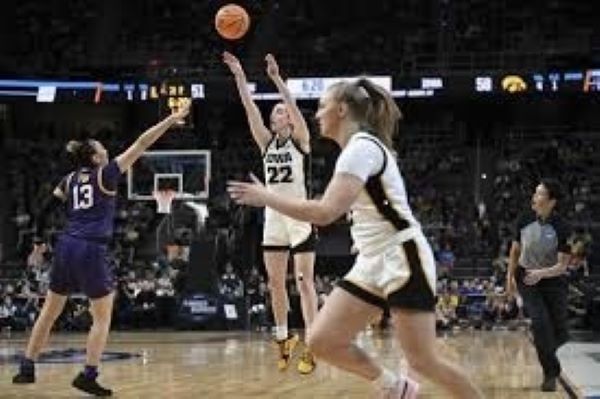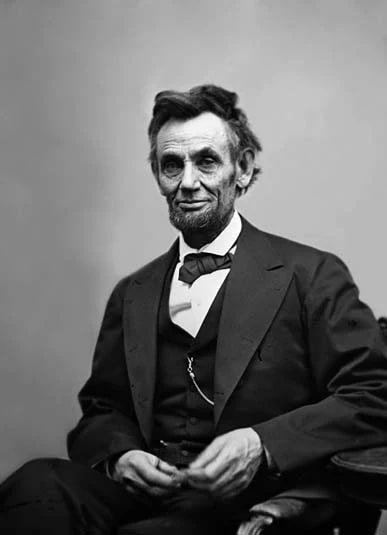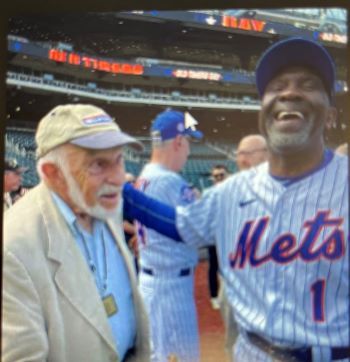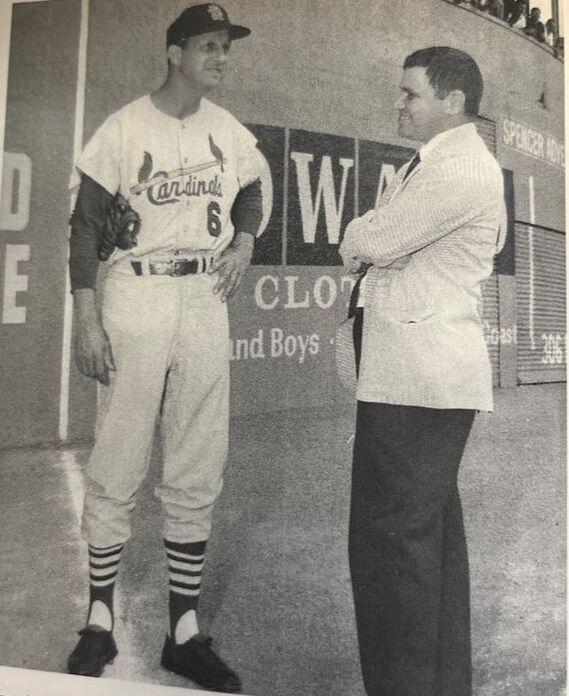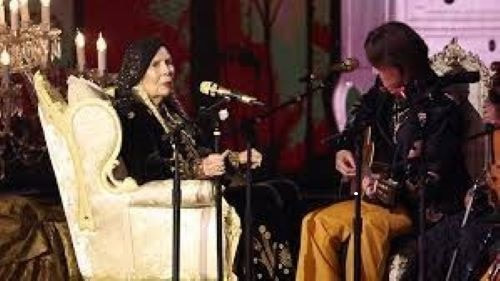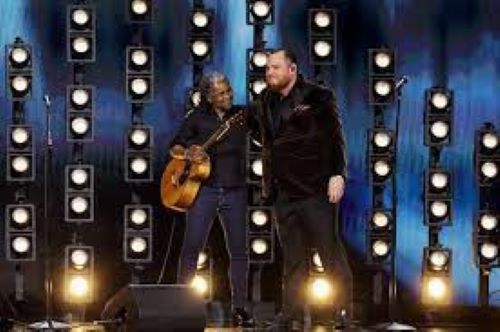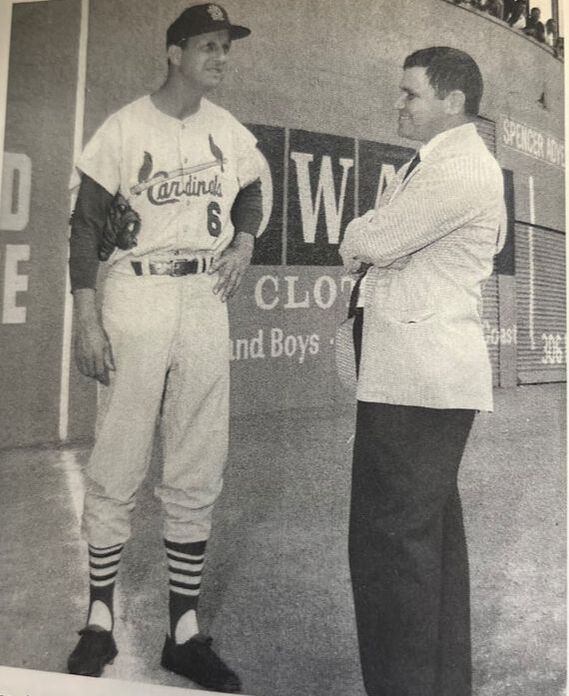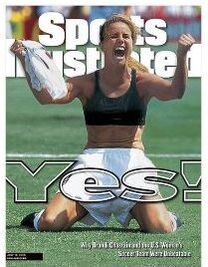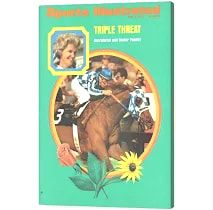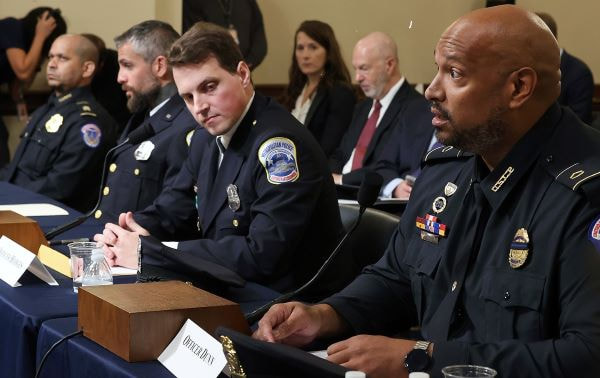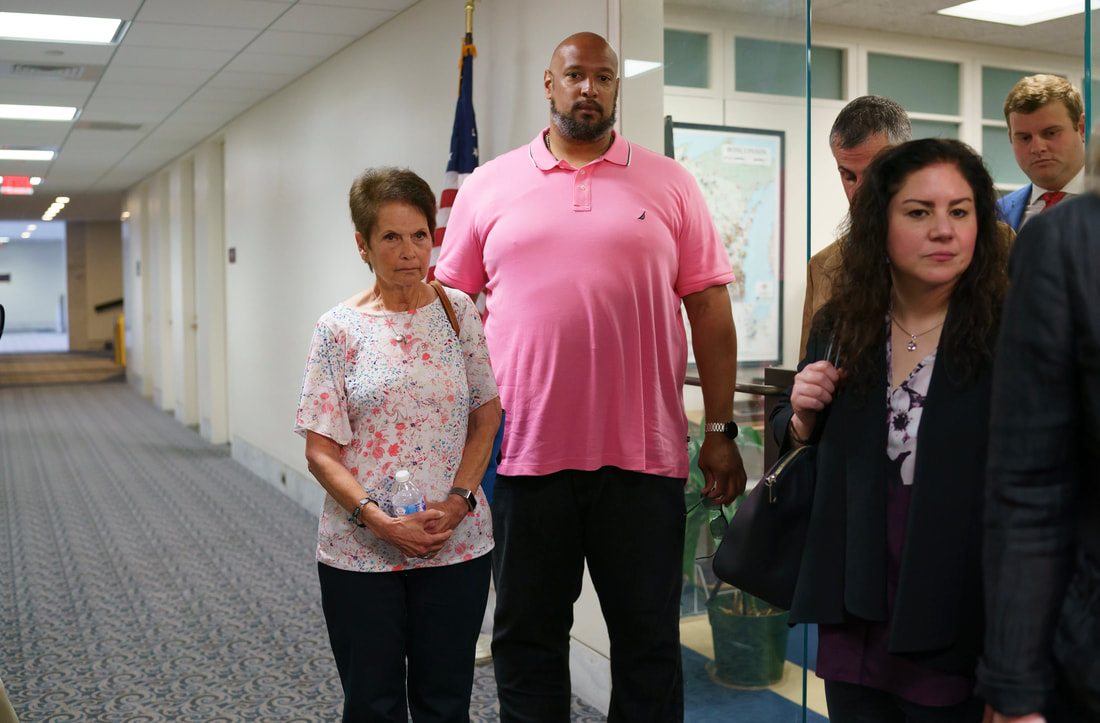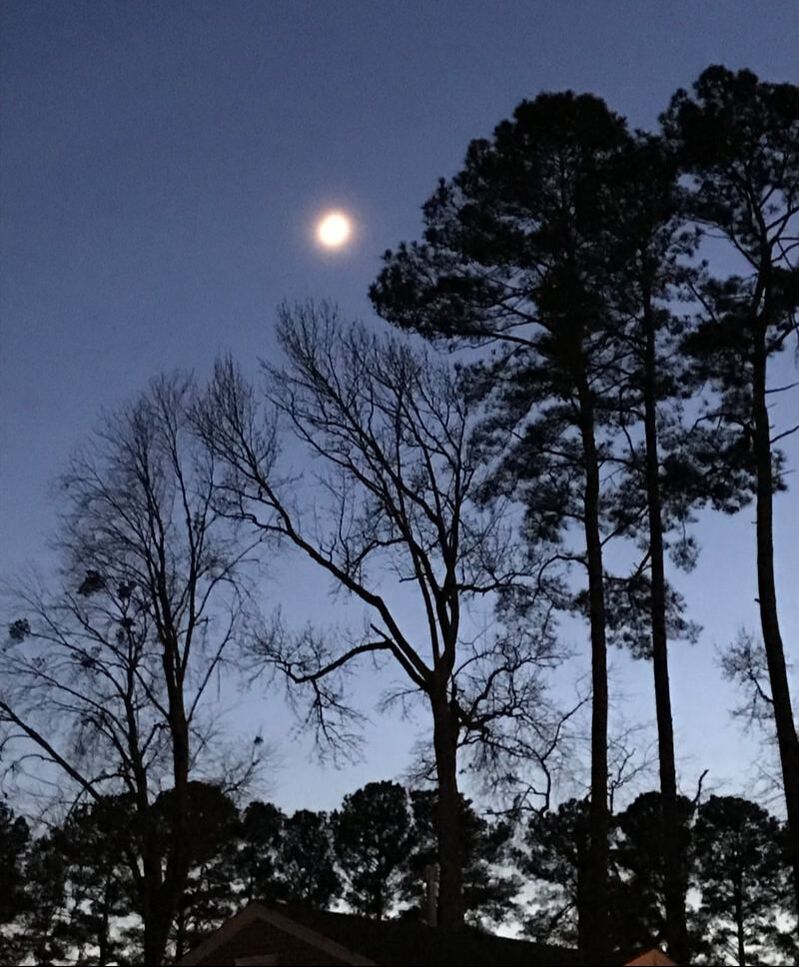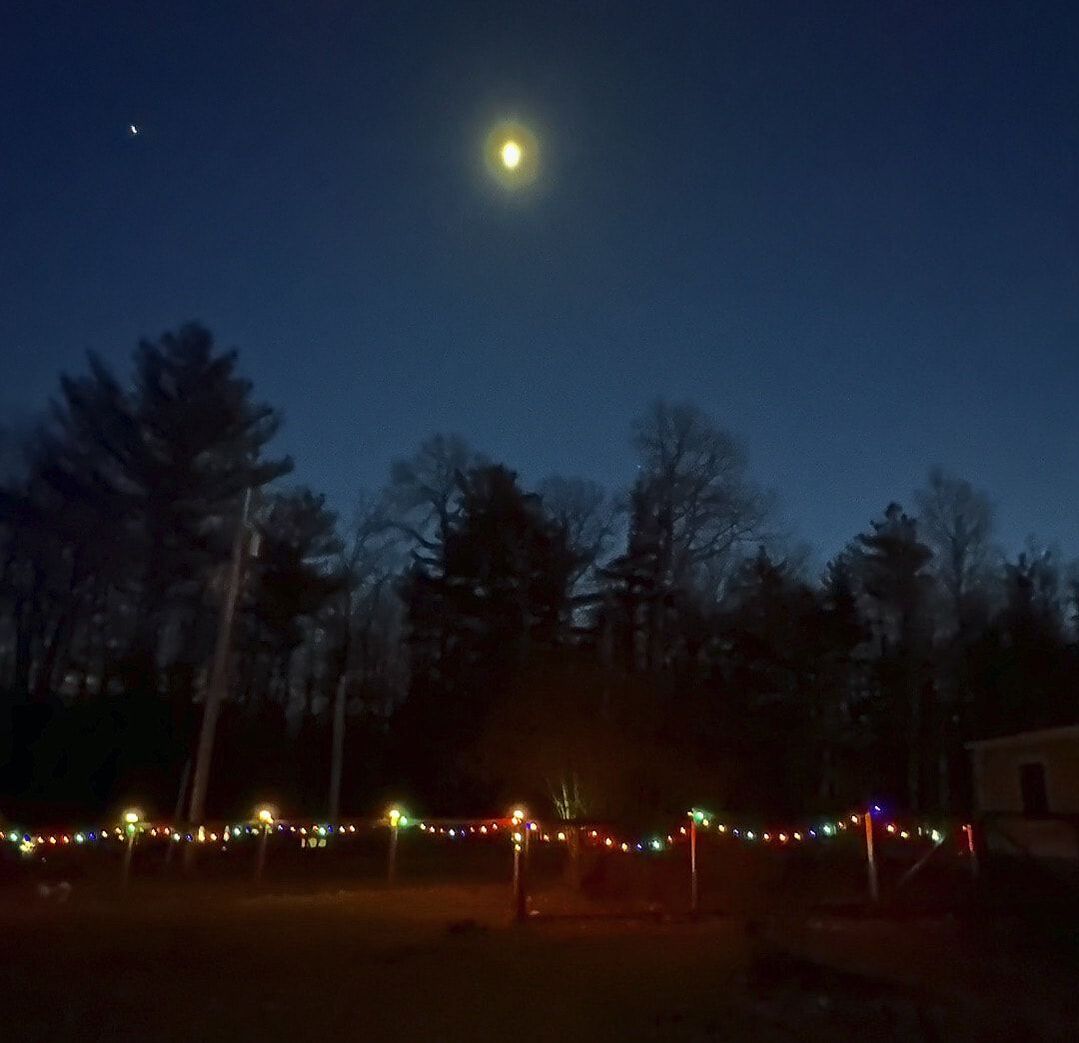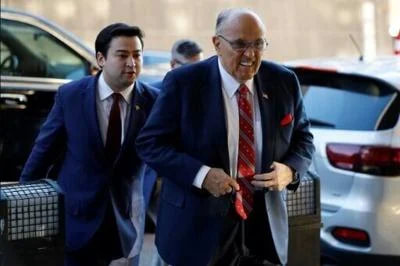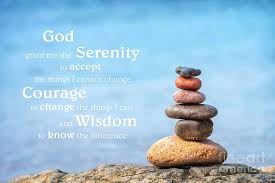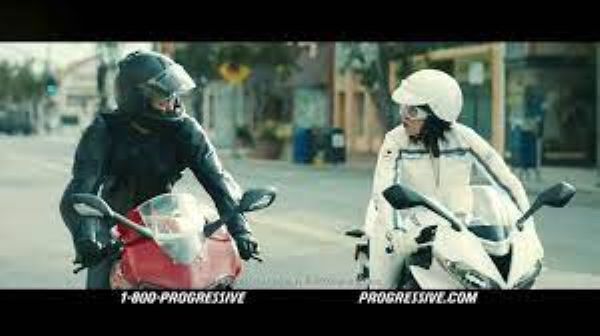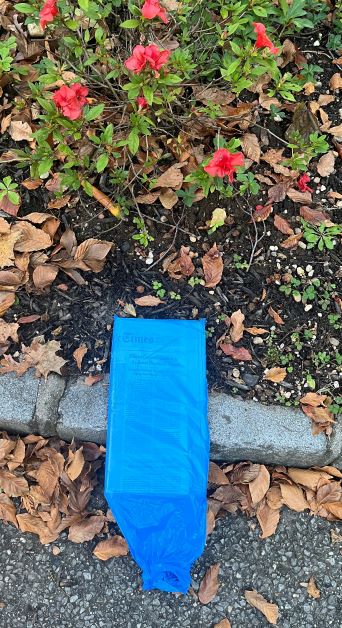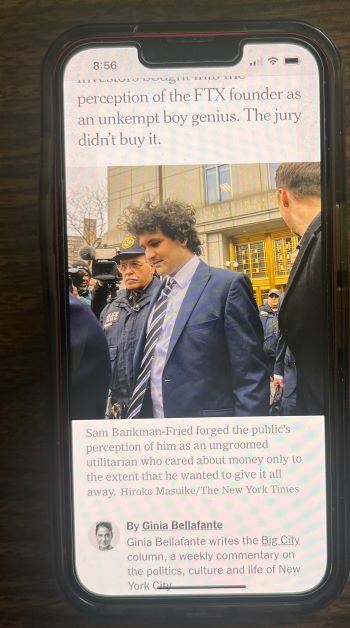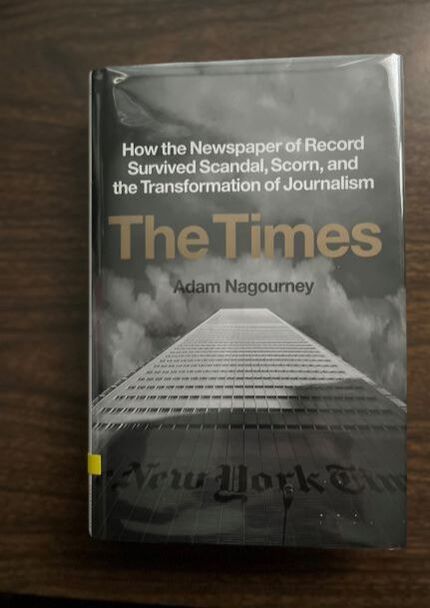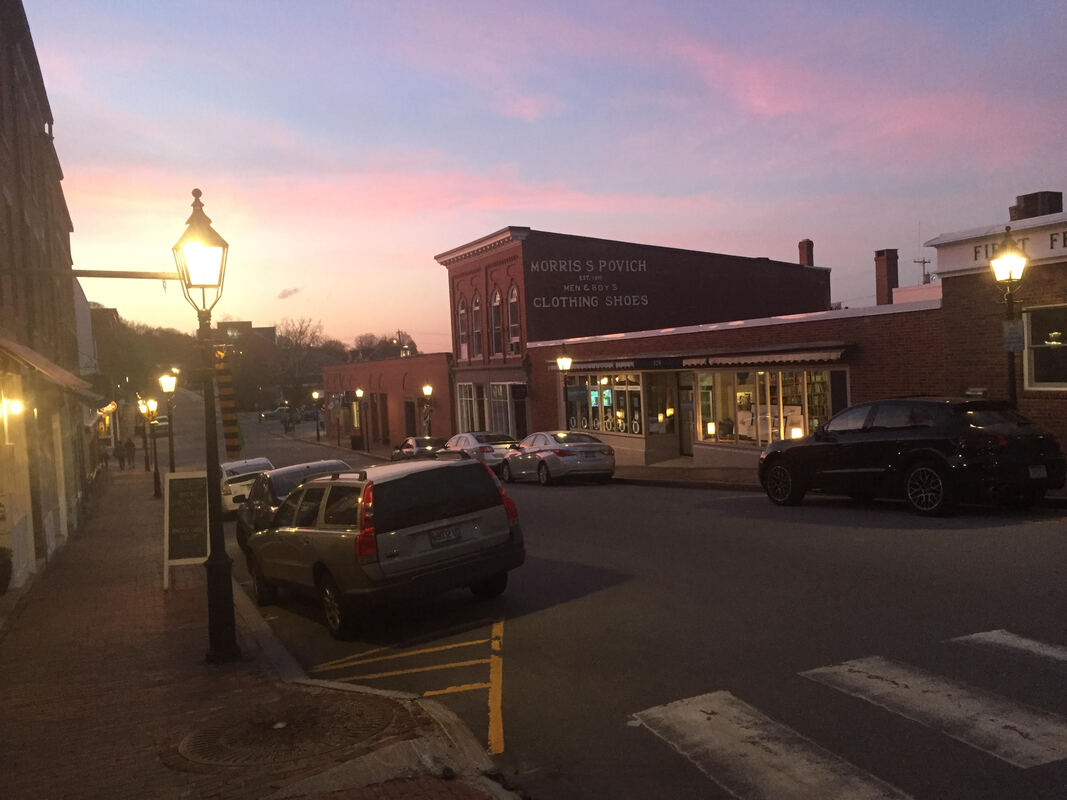|
I’m finishing up a four-day sabbatical from watching baseball – although not necessary from thinking about baseball, talking about baseball, writing about baseball. Fact is, two friends – former ball players, now faithful e-mail correspondents, have added to this missive – and a few family Mets fans pulled me back into the game when I was supposed to be resting my brain. I had made a conscious decision to avoid the All-Star Game on Tuesday, plus that gimmick called the Home Run Derby on Monday. Like many Mets fans, I had my fill of mood swings in the first half of the season – the Mets stunk, too many pitchers I never heard of, too many rumors that Pete Alonso would be scuttled. But then the Mets made a gallant run in the month or so before the All-Star Game, rushing into third place. I watched so much that I could justify ducking the all-star events. Plus, I cannot stand network baseball -- too much witless testosterone from old stars, too much born-yesterday overkill from the network booth. I wanted the terrific Mets commentators – Cohen, Darling, Hernandez, plus Good Old Howie Rose on the radio -- to rest their lungs, their eyes, their wits. And I would do the same. However, on Tuesday evening, I was listening to the dulcet tones and expertise of Terrance McKnight on WQXR-FM, when I heard my cellphone popping. It was a family member griping about the garish uniforms on the all-stars, a comment backed up by two family Mets fans upstate. I flicked on the tv, saw the ridiculous gear --convinced all over again that Commissioner Rob Manfred has no feel for the sport. Bad enough baseball is now in bed with gambling dens. Now it is hustling overkill uniforms. Back to classical music. However, two friends were still buzzing about the all-star uniforms. I heard from Bill Wakefield, who pitched for the Mets in 1964 and has saved up a lifetime of memories. (Pitching to Willie Mays! Running around New York with Hot Rod Kanehl! Studying Casey Stengel up close!) Now a retired businessman in the Bay Area, Wakefield proposed baseball switch to uniforms sported by barnstorming teams with Babe Ruth and Lou Gehrig. Good idea. Wakefield wrote about the first all-star game he remembered from his youth in Kansas City – a rain-shortened game in Philadelphia in 1952, won by diminutive lefty Bobby Shantz. Yes! I also heard it on the radio. Wakefield’s reverie triggered my memory of the first All-Star Game I attended – 1949, my father took me to Ebbets Field, great seats behind home plate. For whatever reason, one of my strongest memories is Andy Pafko of the Chicago Cubs, getting a hit, running the bases in the the Cubs’ traditional home uniform, with red logo. What a concept! I sent my Pafko memories to Wakefield, and also to my friend, Jerry Rosenthal, all-conference shortstop at Hofstra College in 1960, then two years as an infielder in the Milwaukee Braves farm system. Jerry – from Madison High in Brooklyn! – had the immense good fortune to study under farm-system coaches Andy Pafko (who had been traded to Brooklyn in 1951) and Dixie Walker (the Peepul’s Cherce in the mid 1940s.) Jerry, later a schoolteacher in Brooklyn, came through, as I knew he would, with his memories of Pafko and Walker. From Jerry Rosenthal:  I was thrilled by seeing that Andy Pafko baseball card! I will never forget Andy ; one of the finest men I ever met! During the Braves' minor-league spring training camp of 1962, in Waycross, Ga., I got up the courage to asked Andy about "the shot heard round the world"! It was in the "rec" room, after one of our afternoon games. Somehow, I was one of Andy's favorites. That was partly because I was from Brooklyn and we could talk knowledgeably about the old Dodgers and the wonderful Brooklyn culture of the early 1950's! By the way, Dodger fans loved Pafko! Andy told me that he actually cried when when the Dodgers traded him to the Braves! He also said that his time in Brooklyn were his happiest years in baseball!” (Jerry recalled how he asked about Pafko’s moment in 1951, watching Bobby Thomson’s home run sail over his head into the lower deck at the Polo Grounds.)
Jerry wrote: "I finally asked him about Bobby's historic "shot." "I distinctly remember Andy saying: "I played many years with the Cubs, so I knew that that any hard-hit ball in the air that was pulled by a right handed hitter was going out! He added that "he could, at times, tell by "the crack of the bat" when the ball was gone"! He said he “heard it clearly." "Maybe that was because of the sparse crowd at the PG on that momentous day! "That iconic picture of Pafko looking up at the lower- left field deck is branded in the collective memory bank of even the casual baseball fan! "Most fans still think Bobby's homer was hit into the upper deck, maybe that was because it looked like Andy was looking high up! Andy told me that he always got this question: "Did you think you had a chance to catch the ball?" It was impossible to jump anywhere near a wall that was fifteen feet high! "Durocher actually commented on the rarity of homers being hit into the lower left field deck; most homers were hit into the overhang of the upper deck! Bobby hit a sinking line drive off a fastball! it quickly disappeared into the lower deck! "As fate would have it, Bobby Thomson was traded to the Milwaukee Braves and roomed with Pafko for a few years! They became close friends. At first, Bobby wore his number 23, the same number as when he was with the Giants, until he switched to 25 the next year. "I wore that hand-me-down number 25 jersey at Eau Claire. Wish I had that jersey today with "Thomson" embroidered in red thread on the inside. By the way, picture available.) "Here's a fact that most baseball fans never mention: Andy Pafko took over the third base position from Stan Hack in 1945 and played third base in the Cubs - Tigers World Series. "The Associated Press named Pafko to the All Star game as the starting third baseman, even though the game was not played in 45' because of the War. "So Andy was one of the rare major leaguers who made the All Star team playing two positions ( all told- Pafko played in five All Star games - one at third base and four as an outfielder ). "Pafko ended his wonderful ML career by being replaced in right field by Hank Aaron! Not a bad way to go out!" *** (Jerry, who was in several English classes with me at Hofstra, finished with a flourish:) "George, couldn't agree more about those beer-league uniforms worn by All Star players! It irritated me so much I watched part of the Republican Convention! "I took an antacid tablet and went to bed! " *** GV: I have the feeling baseball is going to come in handy in the months to come.
16 Comments
People born on the Fourth of July know the drill.
We get used to nice people making cute jokes when we give our birth date. Many of us on this anonymous list get used to working on our birthdays. I could talk about enjoying a British military band playing American pop music before play commenced at Wimbledon on the Fourth of July. John Sterling could tell stories about being in a ballpark, describing fly balls that are high, that are long, that are gone. All the way back to the days of holiday doubleheaders. John is a trouper. Last year he got hit by a foul ball but stayed in the game. But this year, even John had enough. He retired this past April, early in the 2024 Yankee season. John was tired, Bless his heart, of course he was. I wonder what John is doing on his 86th birthday. I'd e-mail him a happy birthday -- but a mutual friend said John doesn't do e-mail. He just gabs, and makes up puns. Much better. So Happy Birthday, John, and the others in this select little group. I believe most of us are retired. (Does filing my little personal therapy website count as working? ) I know one of us is working and good for her. And John, wherever you are, I hope your colleagues ring you during the game and get your view from retirement land. Happy Birthday to my fellow birthday pals. *** https://www.npr.org/2024/04/22/1246429875/after-decades-of-calling-baseball-games-radio-broadcaster-john-sterling-has-reti#:~:text=Famed%20baseball%20radio%20broadcaster%20John,gave%20him%20a%20big%20sendoff. *** Just thinking about July 4 makes me recall a few birthdays I spent, getting off the London tube at Southfields station and buy a bag of juicy fresh cherries and carrying them into the Wimbledon media tribune. One year we had a closeup of Princess Diana and her two little boys in the Royal Box. Some years I shared the bag of cherries with a press official, Sarah Clarke, who was always good company -- until she had to get to work sorting out the Beastie Boys of the press. Sarah has since graduated to the highly prestigious position of Black Rod, the ceremonial leader of the procession of Parliament -- the first female Black Rod, ever, in over 650 years. I hope Sarah still gets out to Wimbledon. Me, I'm retired, like a handful of pals on my list. *** Bill Wakefield pitched only one season in the major leagues – 1964 – but he finds himself tied to Willie Mays, who died the other day at 93.
We both got to see Willie Mays up close – me as a young sportswriter, realizing that Mays was uncomfortable with the new breed of mostly-New-York writers (The Chipmunks) who asked him layered questions. Willie was not the bubbly young star described by the writers who had covered him back in his Polo Grounds days, when he was a kid out of Alabama. Wakefield was a rook out of Stanford University in 1964. He saw Willie Mays at 60 feet, 6 inches – close enough to justify the Willie Mays baseball card he had treasured as a kid in Kansas City, Mo. I was not surprised this week when I received an email from Wakefield, talking about 1964. The two of us have Casey Stengel and Hot Rod Kanehl and Willie Mays in common, “Willie's passing is being covered with proper respect by the finest sports writers in the nation. I agree with all their tributes. I cannot add to their wonderful admiring thoughts,” wrote Wakefield, now retired in the Bay Area. “But…my modest contribution to my friends,” Wakefield continued. “Everyone has a personal take on what a hero's passing at 93 means to them. “1951 - Card below - Butch and I ( age 10) open baseball card bubble gum packages on our front porch in KC. "Hey here's a Willie Mays - " My observation - Willie is EXACTLY 10 years older than me. Willie 5/1931 Billy W. 5/1941. Thanks to my dear mom Bobbie -- didn't get thrown out and I've still got the card!!!!!!” (GV: Mothers get the rap for tossing out old cards and autographs, in the name of order.) Wakefield continued: “1961 - I'm playing first year with Cardinals -- Lancaster Red Roses -- I'm 20 and Willie is 30. I wonder - maybe at some point I'll face Willie.” Then it was 1964, and Wakefield was a rook with the hideous but amusing Mets, studying Casey up close. The man on the trading card materialized in Wakefield’s life on May 15, 1964, as the Mets flew west for a weekend series with the Giants. They actually had a 4-2 lead in the eighth inning when….but let the great and invaluable website, Retrosheet, tell the story: https://www.retrosheet.org/boxesetc/1964/B05150SFN1964.htm There is no suggestion that Willie nearly hit one out – just a fly ball to Jim Hickman. Wakefield got 6 outs against a terrific team. Wakefield started against the man on the playing card on May 31 in Shea Stadium. This time he gave up a run-scoring single to Mays in the first inning, and was removed after two innings. The game went on so long that Casey was ruminating about putting Larry Bearnarth in the game -- not a bad idea, except that the two college boys had already pitched in that game. Bearnarth and Wakefield did the most logical thing – dressing in civilian clothes and slipping into the stands and sipping a cold beer and witnessing manager Alvin Dark switching Mays to shortstop for the 10th, 11th and 12th inning. (Dark had used Mays for one inning the previous season: https://www.cbssports.com/mlb/news/photo-of-the-day-willie-mays-shortstop/ The second game in 1964 went 23 innings and, of course, the Giants won. Wakefield would see Mays again in August in Shea Stadium: “I throw Willie a good sinker ( I thought) down and in ( It WASN'T a low hard slider!!) -- he hits it out off the scoreboard in right center …inside-out swing . Loud LOUD!! crowd cheer -- Mets fans / Willie fans!!” No shame in being stung by Mays, who would finish with 660 home runs. Wakefield’s list of Mays sightings continued to 1973: “I play in an Old-Timers game at Shea -- vivid memory -- I'm the old timer and Willie is still active player (his last year) for the Mets. Pre-game Mets Clubhouse exchange - DiMaggio (The DiMaggio) is dressing next to me -- Willie comes over. Big smile.” "Hey Joe" - and I get a head nod!!” “Willie is 42 I'm 32.” “2024 -- I still have my Willie card. Willie passed away at 93. “RIP, Willie. A sad day. My hero.” Some of the greatest players ever – Ted Williams, for example – speculated that Mays was the best. This judgment certainly came out in the stirring obituary by Richard Goldstein for The New York Times:puhttps://www.nytimes.com/2024/06/18/sports/willie-mays-dead.html And there was a lovely column by Kurt Streeter, the last NYT sports columnist before that newspaper entered a compact with some sports website. I had no issue with Streeter describing Mays as stumbling with the Mets in the 1973 World Series. Bless his heart, Willie stayed active into athletic old age, and he lived to be 93 – and people remember him for “the catch” in the 1954 World Series. https://www.nytimes.com/2024/06/18/us/willie-mays-death-baseball-legacy.html Bill Wakefield can proudly display his Willie Mays card, and he can recall Willie’s three innings at shortstop in that monumental game in 1964. I did not remember Mays’ four career innings at shortstop but they must have invaded my brain, because I once wrote about picking an all-star team in the mythical Game to Save the World. As I recall, my choices for outfield were Ted Williams, Henry Aaron and Babe Ruth (with apologies to the likes of Roberto Clemente, Joe DiMaggio, Stan Musial and Mickey Mantle.) And what about Willie Mays? Just like Alvin Dark,I put Willie at shortstop, on the theory that Mays, whether at center field or shortstop, was the greatest baseball player ever. *** On the 50th anniversary of Willie Mays’ immortal catch, I wrote about how Arnold Hano wrote a slim masterpiece of a book about the game: https://www.nytimes.com/2004/09/29/sports/baseball/hazy-sunshine-vivid-memory.html?_r=0 ### "There are 9,388 graves in the cemetery, most of them in the form of white Latin crosses, a handful of them Stars of David commemorating Jewish American service members. As antisemitism rises again in Europe, they seem somehow more conspicuous." ---Roger Cohen, The New York Times. "D-Day at 80" -- June 6, 2024. https://www.nytimes.com/2024/06/06/world/europe/dday-80th-anniversary-veterans-remember.html Marianne Vecsey noticed the same thing, back in the mid-70s, when we drove with our young children to Normandy, in the sweet damp spring. Part of Marianne's ancestry goes back a thousand years to Normandy, but this was not about us. This was about the Allies who died during the invasion, now 80 years ago. We live in New York; we tend to notice stars amidst the crosses. "You hear the number, but when you stand there, and see the graves with crosses and stars, it sinks in. It's stunning, actually," Marianne said on D-Day 2024. Roger Cohen had the same reaction. Of course he did. Roger is one of the greatest Times writers of any generation -- fearless, perceptive, the voice of the underdog, the champion of the fallen. I've spent great times with Roger running around Germany during the 2006 World Cup or watching him suffer for his Chelsea F.C., in some New York pub. I've read his poignant tribute to his mother, to all who suffer, in his 2015 book, "The Girl From Human Street." https://www.theguardian.com/books/2015/feb/22/the-girl-from-human-street-review-roger-cohen-memoir-motherodyssey-of-loss I miss him in New York -- Brooklyn, to be specific, but now he is right where he should be, in the middle of it, as Paris Bureau Chief, preparing his masterful text for the 80th "anniversary." Marianne and I and "the kids" made the same pilgrimmage north from Paris, borrowing a friend's chugging sedan, heading toward the tangy air of salt water, toward Mt. St. Michel. (I had learned to love Mt. St. Michel, reading Richard Halliburton in grade school.) Now we were there, in a scruffy little gite near the beaches, in a spring so damp that sheets did not dry on the line. We saw the Bayeux Tapestry, of course we did, and then we headed to the beach. Funny, as we sat atop one of the sandy cliffs, we heard distinct German voices behind us -- three cars, three sporty couples, no longer the enemy, just modern Europeans on spring holiday, to see the Normandy beaches, the landing now three decades in the past. We took in the logistics of that landing, what it was like to be in those landing craft. The only person I knew who had been in one of those boats was Lawrence Peter Berra of St. Louis; but Yogi never talked about it, just as his teammate Ralph Houk barely alluded to his battlefield commission at the Battle of the Bulge. Veterans don't talk much. Marianne learned that when she was a lifeguard at a village pool on Long Island. Some of the older town workers had been in the war, but never shared details. Now it is 80 years, and centenarians will talk, particularly if a master journalist like Roger Cohen asks the right questions, the right way. People talk to Roger. Read his words; look at the photos. Marianne stored the visual memories, the visceral impact, of the Stars and the Crosses. She's an artist -- has a lifetime of paintings out there.
We loved our April in Paris, staying in a sous-sol in Neuilly-sur-Seine. The Metro. The Louvre. The Bois. Then we came home and resumed normal lives, and one night Marianne waited for the family to go to sleep, and she painted her geometric tribute. This month Roger Cohen has been, as always, in the right place, recalling the Canadians, the Europeans, the Americans, who stayed behind, in Normandy. It’s October and the Mets are in the post-season, so right away it is obvious that this new book is a heavy case of fiction.
The 6-foot-5 rookie pitcher and the young catcher are having an affair. Roomies. Love at first flashing of the signals. Hence the novel “Curveball,” by Eric Goodman, published this week by Post Hill Press of New York and Nashville. Goodman is such a Mets fan that he handles the sweet ironies of the Met condition – off the top of my head, including Casey and the bed-sheet banners. Marvelous Marv missing two bases, not one. Swoboda’s diving catch. Mookie’s dribbler. Santana’s no-hitter with an asterisk from an ump. DeGrom-the-Pheenom, vanished without a kind word. Nowadays the Mets have an owner who wants to build a gambling den next to the ballpark in Queens, and call it an oasis for the working class. And meantime the franchise falls apart. Oy. Then again, the Mets have always been a sweet-and-sour franchise. Now Eric Goodman, Yale ’75, has written a second novel about the improbable poignancy of the Mets, even using the real name of the franchise because, you know, you couldn’t make up this stuff. The Curveball in question is tossed by life – a 6-foot, 5-inch pitcher with a wingspan, whose father and grandfather nicknamed him Two-J’s, that is, Two Jews. Jesse Singer figured out long ago that he is gay, and he doesn’t try to have it both ways. He is gallant to the sweet young woman who offers to be his decoy; but he knows he is attracted to the young Mexican catcher, Ramirez, nicknamed “Rah,” who is going to make the team this spring of springs. Jewish Joe Singer has been in an Eric Goodman novel before – “Days of Awe,” which in 1992 prompted me to write a sports column in The New York Times. (Honest, a sports column in The Times, the olden days. You could look it up.) https://www.nytimes.com/1992/09/27/sports/sports-of-the-times-commish-a-literary-heavy.html Jewish Joe Singer got in trouble for not reporting a random suggestion (from his bookie father) to affect a game for gambling purposes. This was back when Baseball Commissioners like Bart Giamatti and Fay Vincent scorned gambling; Jewish Joe’s career veered into foul territory. “Curveball” contains three generations – Grandfather Jack has a lusty lady friend in South Florida. Father Joe is seeking modern treatment for prostate cancer that involves a new procedure in, of all places, Portugal. And Jess Singer is trying to make the varsity Mets squad, without calling attention to himself. The novel reflects how many players have been forced to keep their secrets. Glenn Burke played for the Dodgers and came out in 1982 when he retired, and he died young. Billy Bean, who played six years in the majors and came out when his career was over, and to baseball’s credit has beeb the official senior vice president of diversity, equity and inclusion. (Bean is currently fighting acute myeloid leukemia; his effective counterpart in the book is named Dean.) Goodman does a fine job depicting the conflicts of a young player – even as the Web leaks rumors about the rookie pitcher. Goodman’s other baseball novel – three decades ago! – brought Jewish Joe Singer to the “days of awe,” the very early fall, the time of Hank Greenberg and Sandy Koufax, who found their own ways to honor the Jewish holy days. The lore of real-life Jewish superstars. The Mets in this novel put a little extra pressure on the broad back of rookie Jess Singer – Number 32, once worn, and never to be worn again, by Sandy Koufax, once hailed in a winter baseball writers’ skit as “Sandy/you’re a Jewish Walter Johnson/you’re a dandy." In this knowing, compelling novel, Two-J’s path is his own. Lately, some friends have been asking what I'm doing. My answer is, I've been trying to pitch in more -- plus keep in touch with family and friends -- plus follow the Mets. That does not leave much time for feeding my personal beast on the Web. *** We've also been discovering the little treasures that pop up on the two public channels in our area -- Channel 13 and WLIW21. For a year or two, we were caught by a Swedish series, "Before We Die" -- Stockholm cops, Euro crime family, tangled family ties -- that gave me chills I had not experienced since "The Sopranos." (Later, a British version of "Before We Die" proved to be a gabby failure.) This past winter we got hooked on a French series, "Astrid et Raphaëlle," about a Paris cop who notices that an office worker is autistic, and has the ability to notice and decipher clues, physical and psychological. Before long, the inspector is taking Astrid along on cases -- relying on her intuition. I often wonder how Astrid, the French-Norwegian actress, Sara Mortensen, manages to change gears from her introverted persona when she goes back into the real world. *** As a former news reporter, I am fascinated by the police methods in "Before We Die," and "Astrid et Raphaëlle." And that brings me to "The Brokenwood Mysteries," in a small New Zealand town that seems to have more than its share of characters -- golfers, actors, a snarky young Maori guy -- and an extraordinarily high murder rate. Good grief, we once visited friends in Wellington for a week, and NZ seemed like the most civil place in the world. The Brokenwood series began a decade ago, without my knowing, and at some point there was a new inspector with his own dark side-- Niall Rea, who makes no secret of his past divorces (three? five?) and he admits he deserved every one of them. He also has well-developed detective skills, and quickly makes the judgment that the local assistant, played by Fern Sutherland, is smart and brave, and he treats her with respect. I like the New Zealand police series whereas I scorn the British detective series on the tube because the folksy bumpkin detectives are always explaining things to the suspects. Shut up, already. Detectives keep things to themselves; they do not conduct therapy sessions for their suspects. In a recent episode from "Brokenwood," a suspect is entitled to a suave lawyer, who protects his client, Just like real life. The most recent episode of "Brokenwood" had a country music theme -- the regional star breaks the news that she is moving to, of course, Nashville. Needless to say, she does not live out the night. With my background of helping write Loretta Lynn's autobiography, "Coal Miner's Daughter," traveling around with the Loretta entourage, I am familiar with the fans -- known as "the bugs" to my old musician pals on Loretta's bus. Rea's detective, himself a country buff, notes that avid fans know everything about the mysteries and jealousies of the traveling band. "Brokenwood" was filmed a decade past, and the personnel has moved on. If the inspector and the assistant fall for each other, please do not tell me. *** More public TV: Irish music, including including a series of intimate performances in lovely Irish castles, in a series called "Tradfest." The interviewer is Fiachna Ó Braonáin, a longtime member of the great Irish band, Hothouse Flowers. My wife and I love how the musicians respect each others' work. So that's what I've been doing in my spare time, instead of typing. The backdrop looked familiar -- the Jamaica Ave., Elevated train -- The El.
It was the hub when I was a kid. In Sunday's NYT, there is a story about Brandon Blackwell, who broke into the British quiz shows, representing not Oxford, not Cambridge, but London's Imperial College. Great article by David Segal. https://www.nytimes.com/2024/04/07/business/uk-university-challenge-brandon-blackwell.html I hope you can access the article. *** Great stuff in the NYT in recent days. Wesley Morris wrote a literate and knowing article about the last show of "Curb Your Enthusiasm," 12 years of aggression and bruised feelings. I will admit, I never watched the show -- mainly because I had the feeling, "Wait, I know those people." I'm from New York, I know people in LA, I've had dealings with people in movies and journalism and just-plain-life. The only series I watched, obsessively, in the recent third of my life was "The Sopranos." I plotted my whole week around a TV set that carried it -- finding a motel on a reclaimed coal strip mine in Eastern Kentucky. I totally understand "Curb" fanatics. Wesley Morris, one of the best writers at the NYT, explains why Larry David annoyed and entertained people with his intrusive stands with friends and strangers. I hope you can access this masterpiece. https://www.nytimes.com/2024/04/05/magazine/larry-david-curb-your-enthusiasm.html *** Finally, has anybody noticed the reappearances of stars from the NYT sports section before it was disappeared in favor of stuff from a sports website? The stars have found places in the diaspora of former sports bylines, and have been encouraged to write wise and literate articles about sports, the kind readers used to expect: My Queens pal, Andrew Keh, has a piece in Sunday about soccer fans who congregate to a Brooklyn bar whenever their favorite team -- from Denmark -- is playing. https://www.nytimes.com/2024/04/07/nyregion/akademisk-boldklub-new-york-owners.html Billy Witz was assigned to write about the Caitlin Clark phenomenon at Iowa, https://www.nytimes.com/2024/04/02/us/march-madness-women-iowa-lsu.html And Talya Minsberg, a versatile editor and byline in the lamented Sports section, now writes for the Well section -- so naturally she explained the physical and mental training that brought Clark and Iowa to the NCAA finals. https://www.nytimes.com/2024/04/05/well/live/caitlin-clark-iowa-training.html As we used to say when I was a reporter on the National staff half a century ago, I detect a trend. May I quote Bruce Springsteen in his epic "Atlantic City:" Everything dies, baby, that's a fact But maybe everything that dies some day comes back I was trying to watch the hideous Mets -- an act of avoidance from the huckster running for President.
Not to compare, but the Mets were not watchable, either. Fortunately, fortunately, the Upstate members of the family reported they were watching Caitlin Clark light up the NCAA quarterfinals. Since retiring, I've been pretty much avoiding all sports except baseball (which the Mets used to play) and soccer. Other things to do. But on this night of the April Fools, I knew a refuge when it was suggested. I watched just enough of this heady player loft her shots from the 3-point sector - helping to beat LSU and move into the semifinals next weekend. I cannot compare Clark with some of the great female players I have seen, but she is terrific. Maybe Clark is "a unicorn," as a Japanese friend who knows her baseball calls Shohei Otani, slugger and pitcher, currently and maybe for a long time under suspicion for being in some kind of cahoots with his interpreter with a gambling jones. I wonder if anybody in Major League Baseball has linked Ohtani and his associate with the deluge of gambling ads on TV -- snarky losers trying to get even, in Rob Manfred's world. The commercial-makers know their suckers. Anyway, there is a lot to avoid in a year of a grifter waving his new campaign product, a Bible. What a world. Meantime, the Mets stink -- four straight losses to open the season. I have the suspicion that owner Steve Cohen has messed up the decent mind of Pete Alonso, who looks lost, since the owner told him to have another great year and maybe they could do business. Creeps everywhere. Then again, as a family Mets sufferer asked Monday night when I suggested the owner had submarined Alonso, "Maybe. What's Lindor's excuse?" The Mets announcers were giving a gloomy weather forecast for the next night or two. Wishful thinking on everybody's part. Anyway, Caitlin Clark will be tossing up 3-pointers Friday night against Connecticut. She is worth watching. So many bad things going on, sport is the least of it.
But sport teaches you to hope, to endure – an experiment in a test tube. Take Edwin Diaz of the New York Mets. Last March his Puerto Rican national teammates piled on him in a victory scrum in the World Baseball Classic. The weight, the motion, crumpled his right knee. Within minutes, fans and players and doctors alike knew he would not pitch for a long time, or maybe ever. The gloom took over. If you ask me, the loss of Sugar Diaz caused the Mets to go into a shell, made stalwarts like Pete Alonso and Jeff McNeil try to over-hit the ball, put pressure on creaky elder pitchers – effectively ruining an entire season. Mets fans (and Mets writers) tend to think we are experiencing the mood swings of all humanity. We are from New York, representing New York, and we tend to think it is the center of the universe. So the loss of Edwin Diaz and his sizzling sideways slider put the entire planet off kilter (including things that really are important.) The season was empty. Darkness enveloped the land. The world was out of kilter, without the loudspeaker blasting the Edwin Diaz entrance anthem, “Narco,” recorded by an Australian known as Timmy Trumpet. Would we ever hear it again, see it again, cheer it again? Tonight (Monday, March 11, 2024) we heard it again, in an exhibition game in Florida. After a year of rehab and work, Diaz made his return in a spring exhibition game in the Mets’ home ball park in Florida. An electrical failure seemed a bad omen in the first inning, blacking out 10 minutes of tv, but the game returned, and in the fourth inning, the screen showed Diaz slipping into the bullpen, to warm up, as if he had never been away. In the top of the fifth inning, the sound system blasted the music of Timmy Trumpet, the ritual in our souls from the 2022 season. Edwin Diaz jogged to the mound and struck out three straight Miami hitters – all of them major-leaguers, not bushers filling out a road exhibition roster. His slider slashed at an impossible straight line from 90 degrees to 270 degrees, across the plate. Three straight strikeouts. Not even the emotional Mets fans could have hoped for this. Then Diaz skipped off to the home dugout to be embraced by staff and teammates. Back home in Long Island, all the bad stuff in the news – the fighting, the starvation, the threats, the bombast, the stupidity -- was temporarily overshadowed. Between innings, Diaz was interviewed Michelle Margaux, the sideline reporter, and I scribbled down phrases in quite decent English, like, “I feel good…amazing…in front of the crowd…I was making pitches….I want to say thank-you…I spent time with my family, my kids, I had time with my friends, and I was working hard…I missed my teammates…we are a family, really close….” Sugar Diaz said he had missed the trumpet at the ball park – but at home, he added, his two children often played “Narco,” the blare of Timmy Trumpet, which clearly revived the spring in the reconstructed knee of Edwin Diaz. So maybe this is the start of something – light instead of dark, warmth instead of wind, perhaps even, do I dare say it, sanity instead of madness. I am not sure I love the new ownership of the Mets – making Pete Alonso dangle, listening way too much to the analytics dweebs who value lusty longball swings rather than professional hitting strokes. In the Cohen stewardship, I have been brushing up on my Italian, the quote from Dante’s Inferno, that I memorized years ago: “Lasciate ogni speranza, voi ch’entrate.” (Abandon all hope, ye who enter.) In the daily grind of baseball, the buzz lasts only one night. But after watching the sliders of Sugar Diaz, I have hope, and that is something. I was searching for something to watch Saturday night. My wife had a busy day and was asleep. No Mets, no soccer, at that hour. The great movie series “Reel 13” was taking one of its frequent vacations on PBS. Wait, movies need vacations? Instead, Channel 13 was showing a documentary about the Bee Gees. Just what I wanted, right? I scrolled through the usual channels. On MSNBC – known to me as The Department of Wishful Thinking – Rachel was going on (and on) about some Republican predator. Get me out of here. My search for something led me willy-nilly into the maze of Optimum channels, into the stations with numbers befitting defensive ends in American football. The 90s. And there on Channel 97, The Movie Channel, was the wrinkled face of Daniel Day-Lewis, portraying the president in the Spielberg bio “Lincoln.” I had somehow never seen it before. On the tv screen, the President was in conflict with his own party, including Tommy Lee Jones as Rep. Thaddeus Stevens, the fervent anti-slavery Republican, featured in the Doris Kearns Goodwin book, “Team of Rivals.” Jones once portrayed that rascal Mooney Lynn in the movie, “Coal Miner’s Daughter.” Now he was playing a formidable goad to President Lincoln, who had war troubles, political troubles, family troubles. Let me digress by saying that Lincoln and his wife, Mary Todd Lincoln, are familiar to me, from our two years living in Kentucky. I loved the countryside, where Lincoln lived as a child. Once, I spent hours in the Todd mansion in Lexington – a few steps from the University of Kentucky's Rupp Arena. basketball palace. We still have a wonderful biography – “Mary Todd Lincoln, Biography of a Marriage,” by Ruth Painter Randall, which tells how the Black caretaker, Mammy Sally, told the Todd girls a secret – that she marked the back door of the mansion, to alert runaway slaves that she would slip food to them as they headed north toward the Ohio River and freedom. I often think of the tangled childhood that formed the conflicted wife of a President. So there was the movie, Saturday night, as the House of Representatives dithered about backing Lincoln’s Emancipation Proclamation. Made me think about the ship of fools, Republican version, these days. The movie also depicts Lincoln’s son, Robert-- forbidden from signing up as a soldier -- watching severed limbs of Union soldiers, being dumped into an open pit. Those terrible times etched themselves on the angular face of Daniel Day-Lewis/Abraham Lincoln. In the movie, an aide tells Lincoln that he has aged 10 years in the past year, and the President nods knowingly. He feels the struggles in his bones, in the crevices on his face. When he is assassinated and dies on April 15, 1865, he is all of 56 years old. Despite Lincoln’s own border-state conflicts, he has seen the Blacks “emancipated,” whatever that meant to anybody. Watching the movie on Saturday night, I was touched by the strange scenario: Republicans the good guys, voting for emancipation, and the Democrats, the bad guys, doing the dirty work for southern plantation owners. How weird to see party names flipped -- in the age of MAGA/Fox/corrupt Supreme Court/ babbling religious zealots putting shackles on female Americans. Sunday morning, I went out in the driveway and picked up the Daily Miracle (i.e., The NYT) and there was a column by Maureen Dowd, suggesting a State of the Union speech this Thursday for President Biden, age 81 – a full quarter century older than Abraham Lincoln was in 1865. The Lincoln movie seems like grotesque real life – a battered president riding a horse through the killing fields of Virginia. No Lincolns around here in 2024. But are Americans so addled they cannot tell the difference between an aging President and an aging scoundrel who has been a bad seed all his life? *** Maureen Dowd’s proposal for President Biden’s speech: https://www.nytimes.com/2024/03/02/opinion/joe-biden-state-of-the-union.html NB: Here is a Youtube I just discovered this morning, a earnest-appearing look at part of the Lincoln movie that I missed Saturday night. For decades, they were teammates in the sports pages of that great paper, Newsday.
Steve Jacobson could cover anything, and ask probing questions, Stan Isaacs saw life from his natural position – way out, left field. They were my colleagues and my friends and my inspiration when I worked at Newsday in the 60s. We even played touch football together. Now, by the great karma of memory and files and editors, Steve Jacobson and Stan Isaacs are back. Stan passed in 2013 but his words are being revived in an autobiography, “Out of Left Field: A Sportswriter’s Last Word,” to be published in April. Steve -- also known as Jake -- is very much with us in a current podcast celebrating a magnificent book he wrote in 2007: ”Carrying Jackie’s Torch: The Players Who Integrated Baseball – and America,” by Lawrence Hill Books. Jake's book is, alas, out of print at the present time (as Casey Stengel used to say), but as part of Black History Month, the book has been celebrated in a podcast by Steve Taddei, from his perch in the Bay Area. “I found ‘Carrying Jackie's Torch’ at the public library,” Taddei wrote in an e-mail. “The book fit in well with ‘Leadership Lessons From the Negro Leagues,’ because it gave me perspective to the adversity my heroes of the 1960's and 70's went through and overcame on their journey to the Major Leagues.” It is no secret that the evils of segregation, which kept Black players out of “organized” ball were not magically dispersed by Jackie Robinson’s first game with the Brooklyn Dodgers in 1947. Robinson took the first curses from opposing dugouts, the blatant reluctance of some Brooklyn teammates, and the daily problems of living a family life. And it was still going on when Steve Jacobson was talking to players in the 60s. One of the most approachable was Jim (Mudcat) Grant, a star pitcher. One day Grant challenged Steve to expand his questions -- talk to other Black players who ran into the walls of segregation. Years later, that’s what Jacobson did – hearing how Black players at first could not stay in hotels with their white teammates, how they had to eat brown-bag lunches in team buses, how players felt underrated by their managers and teammates. Always a dogged reporter, Steve sought out players we knew from our working years --Tommy Davis who always greeted writers from “my hometown” of Brooklyn, Ed Charles, the spiritual center of the 1969 championship Mets, Bob Gibson, the great pitcher who used his hard veneer to keep hitters – and reporters-- at bay, and Dusty Baker, whose winning personality carried him to an enduring career as manager. Henry Aaron. Ernie Banks, Monte Irvin, Larry Doby. In this podcast, Taddei spoke by phone with Jake (and me, a little) and near the end, Anita Jacobson, Steve’s wife, who tells about the hotel pool in Florida, where the Mets took spring training, circa 1965. Anita -- who cooks and teaches cooking -- recalls what she and my wife Marianne did when another white mother pulled her child out of the pool rather than share chlorine water with a Black child. Life was like that for the Black baseball people who carried Jackie’s torch. Steve Jacobson worked hard to get memories of the Black players, and now Taddei has honored what Jacobson did in his book. Here’s the podcast: *** https://podcasts.apple.com/us/podcast/leadership-lessons-from-the-negro-leagues/id1646816110?i=1000644226588 *** Now, here is today's scoop: Stan Isaacs’ words are back in print. In his retirement, Stan was writing his memoirs, but after the crushing death of his vibrant wife, Bobbie, in January of 2012, Stan’s heart was broken, and the book was unfinished when he slipped away, 15 months later. Fortunately, Aram Goudsouzian, an editor for the University of Illinois Press, became interested in the genre of sportswriters – starting in the late 50s, in their chattery, irreverent, fearless and informed glory in the 1960’s. The Chipmunks: Stan Isaacs. Larry Merchant of the Philadelphia Daily News and Leonard Shecter of the New York Post and other chatterers. “I’ve been working on a book about sportswriters and the big political and cultural shifts of the 1960s, and in the course of my research I read Mitchell Nathanson’s excellent biography, Bouton,” Goudsouzian wrote in an e-mail. “In the notes he had a record of Stan’s unpublished memoir, which I thought might be a good primary source for my own book. So I emailed Nathanson about it, and he put me in touch with Stan’s daughter Ellen, who sent me an electronic copy. As I read it, I had the sense that it should be published – though it needed editing, it had Stan’s distinctive voice and a lens into the shifts of the Chipmunks’ era.” Never having met Stan, Goudsouzian gave the manuscript some nips and tucks, and undoubtedly some enlightened surgery. Stan knew himself as a quirky lefty, coming out of the Depression and the politics of the 1930s, and he told his best stories in this book. The photo on the cover? One night, covering the Yankees in the old ballpark in Kansas City, Stan chose to watch the game from the hill behind right field, patrolled by a few sheep. Back home on Long Island, Jack Mann, the builder of the great Newsday sports section, took an AP photo of reporter-and-sheep, and wrote the caption: "Stanley, is that ewe?" Vintage, definitive Chipmunkery. Jacobson’s world, Isaacs’ world, Mann's world, are definitely from another time. Nowadays, young people do not read newspapers…and newspapers die….and even a great paper like The New York Times has chosen to blow up its sports section, with its tradition of columnists licensed to report and comment. I went to the Times in 1968, blessed with the skills and attitude of Isaacs and Jacobson and the other chipmunks. Just llike ball players who respectfully refer to more than one of their teams as "we," I am proud of my Newsday and Times associations. Miraculously, in these hard times for sports sections, Stan Isaacs still patrols left field and Steve Jacobson still carries Jackie’s torch. Together again. I wondered what the young people thought of Joni Mitchell, in her survivor’s voice, tapping her survivor’s cane, finding the gravelly notes that worked so well.
Rows and flows of angel hair And ice cream castles in the air And feather canyons everywhere Looked at clouds that way Lyrics. Ideas. Imagination. Joni once wrote a song about a party on a Grecian isle, another song about a roadhouse, dancing with a coyote. She was young, now she is old, having survived an aneurysm, Sunday night presiding on a throne, at the Grammys, accompanied by Brandi Carlisle. Queen Joni. And Stevie Wonder, singing a duet with the late Tony Bennett, who died this year at 96. The music is part of our lives. I remember being 10 or so, hanging out with a couple of Italian cousins in Queens, and an older sister was raving about a concert she had attended, “by that crazy Tony Benedetto from Astoria.” The necrology continued – performers who made us happy, or sad, or thoughtful, sometimes all at once. Gordon Lightfoot, whose “Early Morning Rain” made me homesick for New York while living in other people’s town. Andre Watts, so young, taking over Carnegie Hall on a Sunday afternoon, so long ago. Sinead O'Connor, one more reason to treasure the Irish passports we keep up to date. Harry Belafonte – we saw him once on a hot, still summer night in Forest Hills in the 60s. Astrud Gilberto – we saw her in a club on the East Side of Manhattan. Robbie Robertson – I saw him with The Band, four or five places, and in the classic movie, “The Last Waltz.” A recently svelte Oprah Winfrey orated an elegant tribute to Tina Turner, who died this past year, and Oprah praised her music, yes, and also her courage in getting free, and all that entailed. My pal Vic Ziegel and I saw Tina and Ike Turner in a club, I think on North Beach. She was on her way. This night in LA in 2024 also belonged to the young female stars receiving their awards, wearing bits of costume here and there, as they danced up to the stage. Then there was Taylor Swift, recently seen at a football playoff game, cheering her star boyfriend, throwing sour terror into paranoid MAGA types. She said she was going backstage to be photographed with her newest trophy, for her next album cover. You go girl. An early live highlight was Tracy Chapman and Luke Combs, a generation or more apart, playing off each other on her hit song, “Fast Car.” She was so poised, and smiling, with her gray hair. He was gristly and respectful, injecting enough of his bio – Thomas Wolfe’s hilly North Carolina, Appalachian State University, (where he worked as a bouncer), then migrating, as pickers do, to Nashville. As Combs blended with Chapman, I could hear my friend Loretta Lynn nodding enthusiastically and pronouncing, “Now that’s country.” Her highest compliment. As the evening went on, I felt respect for Trevor Noah for maintaining his poise, his intelligence, his sanity. Imagine this night with a lesser host I willed myself to stay awake until the closing by Billy Joel, looking old, but rocking to his standard, “You May Be Right.” I can remember my brother-in-law telling tales of growing up in the same square mile of Long Island as Billy Joel, and how Brenda and Eddie were real people. As the show ended, I was happy that Joni Mitchell….and Tracy Chapman….and Stevie Wonder….and Billy Joel were still making music. Now it was okay for this old guy to fall asleep. ### For decades, they were teammates in the sports pages of that great paper, Newsday.
Steve Jacobson could cover anything, and ask probing questions, Stan Isaacs saw life from his natural position – way out, left field. They were my colleagues and my friends and my inspiration when I worked at Newsday in the 60s. We even played touch football together. Stan passed in 2013 but his words are being revived in an autobiography, “Out of Left Field: A Sportswriter’s Last Word,” to be published in April by the University of Illinois Press. Steve is very much with us in a current podcast celebrating a magnificent book he wrote in 2007: ”Carrying Jackie’s Torch: The Players Who Integrated Baseball – and America,” by Lawrence Hill Books. Steve’s book is, alas, out of print at the present time (as Casey Stengel used to say), but just in time for Black History Month, Jacobson -- known as Jake -- has been celebrated in a podcast by Steve Taddei, from his perch in the Bay Area. “I found ‘Carrying Jackie's Torch’ at the public library,” Taddei wrote in an e-mail. “The book fit in well with ‘Leadership Lessons From the Negro Leagues,’ because it gave me perspective to the adversity my heroes of the 1960's and 70's went through and overcame on their journey to the Major Leagues.” It is no secret that the evils of segregation, which kept Black players out of “organized” ball were not magically dispersed by Jackie Robinson’s first game with the Brooklyn Dodgers in 1947. Robinson took the first curses from opposing dugouts, the blatant reluctance of some Brooklyn teammates, and the daily problems of living in a considerably racist nation. And it was still going on when Steve Jacobson was interviewing players in the 60s. One of the most approachable was Jim (Mudcat) Grant, a star pitcher, who one day challenged Steve to expand his questions: talk to other Black players who ran into the walls of segregation. Years later, that’s what Jake did – hearing how Black players at first could not stay in hotels with their white teammates, how they had to eat brown-bag lunches in team buses, how Black players felt underrated by their managers and teammates. Always a dogged reporter, Jake sought out players we knew from our working years --Tommy Davis who always greeted writers from “my hometown” of Brooklyn, Ed Charles, the spiritual center of the 1969 championship Mets, Bob Gibson, the great pitcher who used his hard veneer to keep hitters – and reporters -- at bay, and Dusty Baker, whose winning personality has carried him to an enduring career as manager. Henry Aaron. Ernie Banks, Monte Irvin, Larry Doby. In this podcast, Steve Taddei spoke by phone with Jake (and me, a little) and near the end, Anita Jacobson, Jake's wife, tells about the hotel pool in Florida, where the Mets took spring training, circa 1965. The formidable Anita -- who cooks, and teaches cooking-- recalls what she and my wife Marianne did when another white mother pulled her child out of the pool rather than share chlorine water with a Black child. Life was like that for the Black baseball people who carried Jackie’s torch. Steve Jacobson worked hard to get memories of the Black players, and now Taddei has honored what Jacobson did in his book. Here’s the podcast: https://podcasts.apple.com/us/podcast/leadership-lessons-from-the-negro-leagues/id1646816110?i=1000644226588 *** And here is the glorious scoop of the day: Stan Isaacs’ words are back in print. In his retirement, Stan was writing his memoirs, but after the crushing death of his vibrant wife, Bobbie, in January of 2012, Stan’s heart was broken, and the book was unfinished when he slipped away 15 months later. Fortunately, Aram Goudsouzian, an editor for the University of Illinois Press, became interested in the genre of sportswriters – starting in the late 50s, in their chattery, irreverent, fearless and informed glory in the 1960’s. The Chipmunks: Stan Isaacs. Larry Merchant of the Philadelphia Daily News and Leonard Shecter of the New York Post and a dozen or more chatterers. “I’ve been working on a book about sportswriters and the big political and cultural shifts of the 1960s, and in the course of my research I read Mitchell Nathanson’s excellent biography, Bouton,” Goudsouzian wrote in an e-mail. “In the notes he had a record of Stan’s unpublished memoir, which I thought might be a good primary source for my own book. So I emailed Nathanson about it, and he put me in touch with Stan’s daughter Ellen, who sent me an electronic copy. As I read it, I had the sense that it should be published – though it needed editing, it had Stan’s distinctive voice and a lens into the shifts of the Chipmunks’ era.” Never having met Stan, Goudsouzian gave the manuscript some nips and tucks, and undoubtedly some enlightened surgery to highlight the inner Isaacs. Stan knew himself as a quirky lefty, coming out of the Depression and the politics of the 1930s, and he tells his best stories in this book. The photo on the cover? One night, covering the Yankees in the old ballpark in Kansas City, Stan chose to watch the game from the hill behind right field, patrolled by a few sheep. Vintage, definitive Stan Isaacs. They were wonderful days -- and I carried them with me to the Times in 1968, blessed with the skills and attitude of Isaacs and Jacobson and the other Chipmunks. I am extremely proud of my career at The Times, but like ball players who have loyalty to more than one ball club, I still refer to both Newsday and the Times as "we." Jacobson’s world, Isaacs’ world, are definitely from another time. Nowadays, young people do not read newspapers…and newspapers die….and even a great paper like The New York Times has chosen to blow up its sports section, with its tradition of reporters and columnists licensed to report and comment. Miraculously, in these hard times for sports sections, Stan Isaacs still patrols left field and Steve Jacobson still carries Jackie’s torch. Together again. (Travis Kelce tosses a Baltimore helmet so Patrick Mahomes can warm up.) *** Let me explain. Under normal circumstances, I do not watch American football because (a) I am retired and don’t have to watch anymore, and (b) there is always something else to do. But Sunday was blighted by meteorological misery – rain and cold and wind – ruling out any outdoor activity. Plus, the European soccer season seems to be in some sleepwalking mode, with minimal glimpses of the storied franchises of the Premiership or Serie A. So what to do on a rainy Sunday? My wife roasted a delicious lunch of organic chicken thighs, and I cleaned up the kitchen, by chance tuning the TV to Lidia Bastianich. I cannot cook, but I love to listen to this wise and eloquent teacher, with her chewy Queens immigrant accent. (I found out recently that Lidia grew up in the same Astoria neighborhood as the Walkens and their bakery. (Christopher Walken, included.) On this rainy Sunday, Lidia was showing single people how to prepare days’ worth of meals. (Like the best teachers, Lidia anticipates questions and confusion: “Put the knife in the center, and it will find its own way.”) She sounded lonely, and ran a few quickie tapes of her late mother. Then, it was nearly 3 PM, so I had to find something to do. My wife was otherwise occupied at home, and our three “kids” were elsewhere. I happen to know that Laura and Diane consider Patrick Mahomes of the Kansas City Chiefs to be a spunky and talented kid-brother type – but they were hours away, watching the conference final, and I opted for television. I’ve been following, at a distance, the romance of Taylor Swift, the entertainer, and Travis Kelce, the tight end of the Chiefs. I don’t believe I could recognize her voice, but I can spot her incandescent smile when she pops up in some secure hospitality box at a Chiefs game. I can also place Kelce’s enlightened-caveman looks. So, a football game. The Baltimore Ravens, with their sturdy and athletic quarterback, Lamar Jackson, tried to claim the home-team advantage but their players seemed a bit chippy and undisciplined. The visitors declined to be intimidated – and Kelce fought for his space, at times landing karate chops on the defenders’ forearms, so he could clamp his paws on the ball. Mahomes scampered here and there, a banty rooster (by comparison), claiming every angle of the barnyard. I forgot to mention that Patrick Mahomes’ his dad, Pat Mahomes, was a pitcher for a decade, helping to upgrade the Mets in 1998-99 – a lifer who could converse with reporters, and set an example for the younger pitchers around him. From a distance, I root for the son and his football team. The CBS crew showed a few seconds’ worth of Taylor Swift, here and there, rooting in a private box, her smile identifying her, and the broadcasters Jim Nantz and Tony Romo went about their business without a word of sideshow. I am normally repelled by the manly-man blathering of football broadcasters, but Nantz and Romo called the plays, with Romo quickly explaining how the burly Chiefs linemen slid across the line, opening holes for the ball carriers, including the aforementioned Patrick Mahomes. The broadcasters did not harp on it, but the camera made it clear that quarterback Jackson was frustrated by the cheap shots and blunders of his teammates. To be truthful, they were out of control, whereas Kansas City was disciplined. Not having seen much football in the past decade, I was impressed by the booming kickoffs, effective punts, acrobatic catches. It’s easy for me to say football games eat up a lot of time – three hours plus! -- with precious little action, but I have to be honest, both sides showed skills and athleticism. The Chiefs won, 17-10, with Kelce making 11 catches for 116 yards and a touchdown, and now the Chiefs will play the San Francisco 49ers in the Super Bowl on Feb. 11, in Las Vegas, the new spiritual home of American sports. (The New York Times – the New York Times – running gambling odds.) I can’t predict whether I will watch the Super Bowl. It really depends on the weather….and the schedule of European soccer that day. In its time, it was eagerly awaited at mailboxes, week after week, for the words and pictures by masters.
Kids don’t read today, which means the average age for readers of print news is probably in the 50s, heading toward the 60s. That’s the best way I can explain the rot that has struck Sports Illustrated. There’s no money in it – certainly not for the speculator-gravediggers who make money by investing in once-great papers and magazines and then writing if off on their taxes. Rich people know how to do that. But once upon a time, Sports Illustrated arrived mid-week, and was a legitimate excuse to spend an hour or three reading it. I started out by reading Robert Creamer on baseball and Dan Jenkins on football and then in my working time I never knew where Gary Smith or Frank Deford had been – mainstream or oddity sport. Whatever the subject, it read better in SI. And the photos. As a working scribe, I ran into the masters like Walter Iooss, Jr., Heinz Kluetmeier or Neil Leifer, deservedly full of themselves. SI also hired the best free-lancers and paid them well. Now a few photography empires have cornered the market – even buying up the photo files of fading empires like SI. My friend John McDermott has watched the fading of the magazine free-lance market for photographers. From his home in Italy, he shared his memories of the golden days of magazines – Newsweek, SI, and others. “I worked for SI a lot. It was soccer that got me in the door initially. I had a meager portfolio and somehow got an appointment to see a photo editor. I think they didn’t know anyone who shot soccer so they gave me a chance. First job was to shoot England v. Italy at Yankee Stadium in 1976 during the Bicentennial Cup. I don’t think I did very well, but maybe they just didn’t know the difference. “I started to get more work for them, and on other things, mainly ‘personality pieces,’ the lengthy back-of-the book stories focused on an athlete. I did Dwight Clark, Matt Biondi, shotputter Maren Seidler, Stanford tennis program and coaches, basketball player Chris Webber and others. More soccer including NASL championships, the Cosmos, Pele’s Farewell Game, Beckenbauer, Maradona’s first game with Argentina in Europe, the 1990 US World Cup team. Pebble Beach golf. “Best assignment ever was a twelve-page essay on rugby where they just told me ‘go and shoot rugby, start with the Monterey Tournament and then figure out what else you can do.’ They sat on it for a year, then during a slow period, a baseball strike, they ran twelve pages, which for SI was a very big deal.” John recalls working with writers like Kenny Moore, Demmie Stathopoulos, Frank Deford, Clive Gammon and Ron Fimrite. Great names, great talents. SI made a newspaper columnist want to check the weekly column in the back of the magazine, to see what Rick Reilly did in his flashy way or what Steve Rushin did in his thoughtful way. A lot of SI writers were good company – friends like Michael Farber on the hockey beat, Grant Wahl on the soccer beat, my neighbor and friend Walter Bingham, Sally Jenkins on the tennis beat. (I now refer to Sally as “the last sports columnist,” meaning she maintains the high level at the Washington Post once demanded at dozens of major papers.) One of my best assignments, ever, was the 1991 Pan-American Games in Cuba – hanging with two SI reporters, Alex Wolff and Merrell Noden. (Our new best friend and interpreter, Ziomara, nicknamed them Dustin Hoffman and Robert Redford, as I recall, for their American movie look.) If I had to pick one classic article from Sports Illustrated, it would be William Nack’s farewell to Secretariat, in 1990 – when the greatest horse of all was put down in extreme old age. Bill put his skill and intensity into everything he did, but particularly horse racing. He covered Secretariat’s Triple Crown and he remained in touch into equine old age on the farm in Lexington, Ky. (I got to pet the giant red beast, swaybacked by then – with the help of a few contraband sugar cubes -- during Derby week in 1989.) A year later, Nack got the call from a friend to get himself down to Bluegrass country to say goodbye to Big Red. Knowing how long it took for him to write, I bet he shed many tears while writing his elegant ode to a dear friend. SI had the space, and the color pages, and the freedom for Bill Nack, and so many others, to write what they knew and felt. Then people stopped reading newspapers and magazines. The New York Times blew up its sports section a few months ago, in favor of taking stuff off a website. The great Baltimore Sun has just fallen to scavenger types. This will sound snide, but when I heard investors were preparing to put down Sports Illustrated, I had to catch myself thinking, “You mean, it is still publishing?” In its time, it was a giant. *** Bill Nack’s farewell to Secretariat: https://www.si.com/horse-racing/2015/01/02/pure-heart-william-nack-secretariat A partial list of SI writers. (Not counting the great photographers.) https://en.wikipedia.org/wiki/List_of_Sports_Illustrated_writers *** Please, recall your favorite SI articles – and favorite SI photo spreads – and include them under “Comments.” GV The message came from a colleague in one of the danger spots in the world.
“I hope that you've got a column in you on Beckenbauer's passing. I'd love to read it.” Ummm, frankly, I had not thought of writing a word about the passing of Franz Beckenbauer, the great German soccer player, last Sunday. I figured the NYT had already mustered two of their surviving sports experts who produced a worldly obituary of the man known as “Der Kaiser.” Beckenbauer was “Der Kaiser” for his smooth play in winning a World Cup on the field in 1974 and another World Cup as the manager of the German team in 1990. I saw Beckenbauer glide serenely through his final years with the Cosmos in the strange new world. Like a lot of great world footballers at the end of their careers, he seemed to be in the U.S. for the money as well as the serenity of living relatively un-noticed in the streets and restaurants. Beckenbauer had a great rep for having played the 1970 World Cup semifinal with a dislocated collarbone (some reports say the collarbone was broken.) For his strange adventure in the U.S., he was surrounded by teammates who out-shone him in charisma – Pelé, just to drop a name, plus the rock-steady defender Carlos Alberto and the solipsistic striker Giorgio Chinaglia. Then Der Kaiser went home. In 1990, in Rome, I was impressed by Beckenbauer after winning the World Cup as German manager. He was giving a press conference at the front of the swarm of soccer scribes, and spotted Lawrie Mifflin of The New York Times, who had covered his Cosmos days. She was standing on a chair to ask a question, and Beckenbauer said, "Hello, Lawrie. How's New York?" The NYT obit by Rory Smith and Andrew Das more than handles the Beckenbauer career and his life, inevitably more complicated than 90 minutes on the pitch. The most impressive thing I know about Der Kaiser is that he was part of the classic Monty Python skit about the big match between philosophers – Greeks vs. Germans, three and a half minutes of inspired name-dropping and turgid pondering. Twenty-one famous philosophers and one footballer. Franz Beckenbauer – “a bit of a surprise,” emotes the classically British commentator. For laughs, the skit needed a famous footballer in the midst of the thumb-sucking, and it has Beckenbauer. ( I have consulted the Web and written to a couple of knowledgeable colleagues, but nothing suggests it was really Beckenbauer.) The point is, one suave sweeper gives a classy note to the big event. I don’t even know how the DVD found its way into our household, but I used to watch it whenever grandson George paid a visit, and we howled at the hapless posturing by men in robes, men in suits. Franz Beckenbauer’s greatest moment. What did he think of it? Wish I knew. *** Note to my pal in a danger spot: Hope this answers your question. Be safe. GV *** The NYT obit: https://www.nytimes.com/2024/01/08/world/europe/franz-beckenbauer-dead.html Bless its heart, Wiki has a lush section about the Philosophers’ match: https://en.wikipedia.org/wiki/The_Philosophers%27_Football_Match We did not know Harry Dunn until that evil day of Jan. 6, 2021, when the defeated President of the United States unleased a swarm of cut-throats and misfits and racists on the Capitol building.
Harry Dunn was in the middle – set up by a mixture of incompetence and malice within the government. No warning, no equipment, no backup. He and other Capitol police had to fight for their lives, mostly using bare hands against thugs sent by Donald Trump. Now their struggle for life is part of the record. With dignity and intelligence, Harry Dunn has testified to the Jan. 6 committee and has given interviews to the media. He is a familiar figure, a huge man – 6 feet, 7 inches, 325 pounds, a former lineman for James Madison University, the national Division I-AA champions in 2005. His bulk and his desperation saved his life, and his humble wit and wry smile and his college-educated vocabulary have made him a familiar figure. I was going to write about Harry Dunn and his new book anyway, but on Friday morning I learned he is running to replace John P. Sarbanes, who is retiring. According to Luke Broadwater of the New York Times, five members of the Maryland state legislature have also announced their intention to run. It is doubtful that any of those candidates have had the public testing of Harry Dunn, since the day he fought for his life, only to hear racist slurs against him, and see rioters flash their own police shields and say they were staging the “demonstration” to help the country. “At one point, I confronted a group of terrorists in the crypt,” Dunn recalled in an interview with Broadwater on Feb. 21, 2021 “There were downed officers behind me, and I’m like, ‘I have to hold this hallway.’ I’m tired, but I said, ‘Y’all not coming through here.’ They said, ‘We’re coming. This is our house. We’re taking over.’ That’s when I said, ‘We’ve got dozens of downed officers here. Why are y’all doing this? Get out!’ "I guess it was a group of the Oath Keepers and they appeared to be concerned. ‘Officers are hurt?’ That’s when one guy said, ‘We’re doing this for you,’ and showed me his badge. He was an officer. But they didn’t get through me. Only one person attempted to get through me at that time, and he met the floor. He met the floor. Finally, officers with armored gear responded and held that area.” At one point, Dunn defended the office of Nancy Pelosi, then the speaker of the House, and a chief target of the mob that seemed poised to lynch her. Later Dunn sized up what had happened that day: “I sat down on a bench with a friend of mine who is also a Black Capitol Police officer and told him about the racial slurs I had endured,” Mr. Dunn recalled during his testimony to the Jan. 6 committee. He added that he “became very emotional,” asking how such a thing could happen and yelling, “‘Is this America?’” “I began sobbing, and officers came over to console me,” he said. Harry Dunn has become a familiar figure – often appearing with Nicolle Wallace of MSNBC and other interviewers. In October, Dunn released his book, “Standing My Ground: Standing My Ground: A Capitol Police Officer’s Fight for Accountability and Good Trouble After January 6th,” by Hachette Books. During the Congressional hearings, Harry Dunn sat with fellow officers who had been injured by the mob that day. When rogue officers and service veterans stormed the capitol, some members of Congress used their military training to escort colleagues toward safety. "Get the troops out of the hot sun" -- that's the first thing I was taught in college ROTC. At the moment, it seems to me that Harry Dunn, proclaimed candidate, has the stature, physical and moral and mental, to help protect this threatened country. Great minds think alike. On Tuesday night, in southern Virginia, Randy Fiery felt the coming arrival of the Solstice moon (Thursday, 10:27 PM, eastern time), so he went outside and took advantage of the clear night sky to snap a photo of the full moon. Then he began to write: Never let your head hang down. Never give up and sit down and grieve. Find another way. And don’t pray when it rains if you don’t pray when the sun shines. ---Satchel Paige Then Randy continued to write: Wake up. A new day is upon us. The Winter Solstice is here. It is the shortest day and the longest night of the year. And it is believed that we humans have been celebrating this day for countless generations. Anthropologists say that solstice celebrations go back 30,000 years. Count your fingers and count your toes. Yes, we are still breathing, still meandering through this big old, goofy world. I know that some of you are getting a wee bit older and are looking in the face of impermanence. But I believe that on this day we can all feel a little younger. Take a deep breath and consider that magical stuff may be lurking in the air and sky. Speaking of the sky, it just so happens that a pair of owls have moved into my neighborhood. I have not seen these owls, but I frequently hear them between midnight and 4 AM. Their call is distinctive. They are Great Horned Owls: birds that have a wingspan of 3-5 feet. They are big, silent and deadly. So last night, in honor of the Winter Solstice, I decided to celebrate. It was 3 AM and the temperature was in the high 30s. Dressed in my best pajamas and a good pair of slippers I headed out into the night. I had a flashlight, but I did not turn it on. I went to my garden and sat down on a small stool made of West Virginia hemlock. I was able to locate one of the birds by his call, but my flashlight was not powerful enough to see the owl.. Darkness, silence and the shrill “hooting” of the owl was enough. I did not see that giant bird as winter came to me. But the good news is that the neighbors did not call the police. The neighbors did not go to the local mental health center to report an elderly man in his pajamas, with a flashlight wandering around in the neighborhood. Yes, things can always be worse. I am lucky on this winter day, just knowing that big birds are hanging out in my neighborhood. And best of all, I’m glad that I know each of you. Happy Solstice, R. (Then he added two poems) Meantime, hundreds of miles to the north, Laura Vecsey saw the very same moon, hovering over the hillside at Goose Hollow, N.Y. Laura is herself a poet, among her many talents, but she let the moon do the talking, high above the new fence that keeps in the pups and, theoretically, keeps out the deer and the coyotes and the porcupines and other wildlife. She added some emojis and the message, "Happy Solstice!!!" Did I say, great minds think alike? As it happens, Laura's mother and Randy Fiery both have ancestors with the same family name, Whipple -- dating back to the 17th Century, probably different entry points. But enough genes in common to be under the spell of a nearly full moon, the incoming Solstice. This all deserves a Solstice poem. From Nadia Colburn's lovely website,
Snowy Night by Mary Oliver Last night, an owl in the blue dark tossed an indeterminate number of carefully shaped sounds into the world, in which, a quarter of a mile away, I happened to be standing. I couldn’t tell which one it was – the barred or the great-horned ship of the air – it was that distant. But, anyway, aren’t there moments that are better than knowing something, and sweeter? Snow was falling, so much like stars filling the dark trees that one could easily imagine its reason for being was nothing more than prettiness. I suppose if this were someone else’s story they would have insisted on knowing whatever is knowable – would have hurried over the fields to name it – the owl, I mean. But it’s mine, this poem of the night, and I just stood there, listening and holding out my hands to the soft glitter falling through the air. I love this world, but not for its answers. And I wish good luck to the owl, whatever its name – and I wish great welcome to the snow, whatever its severe and comfortless and beautiful meaning. ### Colborn writes: What better way to celebrate the solstice than with some winter solstice poems? I've chosen some poems to help you savor this time of year. Jump to the poems below. It’s no wonder that throughout history at this dark time of year, people around the world have celebrations of light: Hannukah, Christmas, Kwanzaa all celebrate the miracle of light in dark times. Unfortunately, our society often overlooks the creative and more spiritual side of our traditions. The holidays become times to buy and eat more. But rather than consume more external things, we can treat this dark time as an invitation to wonder and re-ignite our own internal fire. If we want to ignite our inner fire, we need to go inward. It's true that what we might find there may be our own darkness, not just the reflection of others’ darkness. But if we sit with our own pain, we will also be able to sit with our own wonder and process of transformation, which is its own kind of light. And even in the darkness, as winter solstice reminds us, there is light and still more light to come: tomorrow we come get just a bit closer to the sun again. These poems remind us of the light around and within us. The practice of writing can also remind us of the power of light, of rebirth in darkness, or miracles when it seems that the light is running low. I hope you'll enjoy some prompts at the end of the poems. So even in this busy holiday season, take some time to get comfortable and settle down with a pen and paper. nadiacolburn.com/winter-solstice-poem-2022/ Colborn also includes a solstice poem by the great Kentucky poet and environmentalist, Wendell Berry. (I wrote about him a year ago.) Happy Solstice The good guys won.
Nobody knows how much of the $148-million will ultimately go to Ruby Freeman and her daughter, Shaye Moss. But in a disheartening time of legal stalling, when it looks like the United States cannot protect itself from those who would tear it apart, at least mother and daughter have been awarded an astounding judgment against Rudy Giuliani. The broken-down bully calculated that he could charge the poll workers with trying to swing the 2020 election, if he used the stereotype of Black criminality. Was this Rudy Giuliani all along? Did he build his career as public prosecutor on bashing the minorities? Was he playing to white prejudices – bragging about busting the squeegee guys who tried to clean windshields for quarters on the clogged streets of Manhattan? Our hero. Protecting us. But he wasn’t smart enough when he stuck government offices near the Twin Towers, already threatened by violence. Was he ever anything more than a mirror image of the racist punk he served, who grew up on Midland Parkway in posh Jamaica Estates? They knew the white buttons to press. Bullies know this stuff. Like in the 2016 campaign when Trump pointed out a Black heckler and, from a safe distance, Trump made a heroic punching gesture and said he would love to…. Big man. Playing to the racists who have come out from under the rocks. (Plus, American anti-Semites who have dragged out their inbred prejudices during about the violence in the Middle East. It never went away.) As for domestic politics: Rigged election? Let’s pick on the Black women. But these Black women had something on their side – faith and resolution. When they testified at the Jan. 6 hearings, they were a monument of righteousness. The mother, Ruby, sat at her daughter’s shoulder, willing her strength, a reverse-gender Pietà. And those two women were flanked by officers who had been heroes in protecting the Congress on that horrible day -- big Harry Dunn and his colleagues. On Friday, outside a courtroom in DC, the mother and daughter seemed happily stunned by the jury decision. They were not spending a penny of it, inasmuch as Rudy may very well be poor. Plus, what is the cost of the two women hearing Trumpite footsteps and seeing Rudy shadows for a long time? But the church ladies were cheered by the legal support, and when they made their statements they did not gloat. In fact, they witnessed their faith on the sidewalk – street preachers, the resolution one hears at the Black churches. They can’t exactly go home again. Too many bad people out there. But they could get in a protected auto and leave the sidewalk to a broken-down former prosecutor, on a perp walk, his role now reversed. I used to know Rudy Giuliani – Yankee fan, America’s mayor who stood up big when the airplanes hit us. He was everywhere that terrible autumn, walking with the cops and the firemen and the priests on the narrow streets of downtown. And in his spare time, he went to root for his Yankees as they advanced to the World Series. Not even two months after the attack, Giuliani managed to follow the Yankees to games in Arizona. He was an appealing figure, waiting with reporters for the clubhouse doors to open. “You’re crazy,” I said to a man operating without sleep, on sheer nerve. “Yeah,” Giuliani would admit with a weary smile. And nobody would deny him the cross-country flights, just for a few hours of rooting, normalcy. Eventually, he signed up to serve the bully, the bigot, the liar, who somehow became president. Instead of rooting for the fabled Yankees, Giuliani was now leading the cheers, giving terrible advice to a real-estate phony. They deserved each other, as Billy Martin once said about a much less important issue. Giuliani knew the formula. Blame the Black women. Now he is an old, feeble man, with the shakes, rumors of drinking, his teeth sticking out of his mouth, Rudy the Fool, but still capable of sounding like Rudy the Prosecutor. The truth will come out, he said on the sidewalk on Friday, but instead, guile seemed to ooze out of him, like hair dye on a hot summer day. He used to go after the squeegee guys. Then he served Trump, the real-estate exaggerator. Then he tried to bash church ladies. Bad move, dude. (My late-in-life friend shares his mission to be sober, one day at a time. We speak the same language, because I gained so much from helping Bob Welch, the late baseball player, write a book about his sobriety. This email popped up on my screen over the weekend.)
(From my friend:) Blessed to share that today is my 34th Anniversary of Sobriety. (12/3/89) Amazing. Some of the gifts that keep on giving......
Dessert Saturday Night, the special Gelato; vanilla with blueberries and strawberries........a sugar, cinnamon topping. I took one spoonful, put my spoon down. Called the waitress over and asked, is there any liquor in this dessert. "Oh yes, the berries are soaked in rum." I told her she could take it back, I cannot eat that. Funny, it was called 'Fire and Ice'.........the fire was, in their understanding, the sugar-cinnamon topping was flamed a bit. Well, the fire here? The rum. I knew it right away. She gave me a different one, Apple Crumb!! I made it disappear. The lesson? I need to continue to be vigilant. Too much to lose. No guarantees. Continuing to be a student of this disease, the darn diploma hasn't shown up yet, so I keep learning. I saw that movie, “Maestro,” some of Leonard Bernstein's life, the ups and downs. He had a number of things I can identify with, and being honest, I was reminded of the wild scenes he mixed into. High performer, heavy partying. I might not be a maestro, I was the other. I could write more, but made the point to myself and you, some who knew me then and now. Some who share sobriety. All of you, the group of quality people I am a winner with. I like winning. On to another 24 hours of this life. Thanks for listening. One Day at A Time. ### (From GV) (This mentality works. I was indoctrinated by Bob Welch, the year after he became sober, after nearly blowing up a promising pitching career with the LA Dodgers. Bob had become a true believer, even when he had a bad day. I will never forget the day the Dodgers were eliminated from the playoffs by the St. Louis Cardinals, and I popped into the Dodger clubhouse as part of my columnist job. The Dodger clubhouse was nearly empty, and Bob explained: “A lot of the guys are out in the back getting hammered – but I choose not to.” By that time, I had inculcated Bob’s attitude. I almost never drink. Don’t need it. I had an earlier example: A family friend, Mary from Ireland, was one of the first women to be active in Alcoholics Anonymous. She made people think about addiction. So when my New York friend drops a reference to sobriety into one of our emails, or in person, we are speaking the same language. Thanks for the note, man.) Whenever these three great articles were -- imagined? assigned? written? spawned? -- could writer or editor have imagined them materializing on one Thanksgiving weekend screaming for a coda of peaceful and gratifying reading? This is exactly what happened to this reader, after a lovely run of children, spouses, grandchildren and friends. I settled down for a quiet morning of going through The Times and the New Yorker and came away with enough depressing news, well handled, but also found three lengthy articles that demanded full attention. All three articles are written by women, about singular women, whose work has captivated me over the years. (I recognize not everybody can get over the paywall of these two great publications, but many can qualify for X number of freebies per month. I urge you to try. Meantime, here is my enthusiastic summation.) Everybody Knows Flo From Progressive. Who is Stephanie Courtney? By Caity Weaver in the NYT Sunday Magazine I was a Flo fan the first time she emerged on the television, wearing her white outfit and a knowing smile, maybe even a wink. She was selling Progressive Insurance – I tend to forget brand names from commercials – but she was also selling herself. I’m in control. I know stuff. Some of her best work was done in the presence of men and motorcycles. (obviously to appeal to motorcycle drivers, which I am not, but I admire people who va-room on the open road.) Flo (I have to be reminded that her name is Stephanie Courtney) reminded me of one of the great bits in the movie “Something Wild,” when bad-girl Melanie Griffith utters something lewd to a motorcycle cop (the writer-director-actor, John Sayles.) Okay, Flo caught my “attention,” and I became a fan of the commercials, including the three sidekicks (mentioned in the NYT but not named) – a goofy guy, a whiny woman, and a stable brother. They mostly play off Flo, as she makes snarky comments off in a corner, and all are welcome in a world of annoying commercials. Writer Caity Weaver goes light on biographical material but provides heartwarming description of how this comedy-club also-ran improvised her way into what seems to be a fortune. (check out the caviar anecdote.) For anybody curious about how films/commercials are done, Weaver also provides lavish info on a shoot in a frequently-used home in the LA region – lights and electric cords and snacks for the workers. I have a friend who rents her house near the beach for TV shoots. I know more than I did about this world. But basically, I also know more about the now-rich woman with the knowing smile who can materialize on my screen any time she wants. *** https://www.newyorker.com/magazine/2023/11/27/a-friend-died-with-her-novel-unfinished-could-i-realize-her-vision The New Yorker materializes in most weeks, and also pops up on the Web, with experts and timely reporting from hideous parts of the world (Hamas, Trump, climate, etc.) The magazine has morphed from a fey weekly to a daily e-necessity, under the guidance of David Remnick, a friend from sportswriting days (tapas in Barcelona during the 1992 Olympics), later a reporter in Moscow, and now a most obviously un-Ross, un-Shawn editor of the New Yorker. Congratulations, David. The Nov. 27 issue materialized with the cover depicting eight folks around an urban apartment dining room (view of the Empire State Building behind the celebrants) eight glittering color screens amid the remains of turkey, wine, candles. “That’s me!” blurted our grand-daughter, Anjali, who on Thanksgiving took part in a memorable dinner for 17 – 17! – prepared by two adults with very demanding jobs. The elder table had a lot of talking. The younger table materialized into the New Yorker cover of one of the best editions, ever, if you ask me (Zadie Smith! David Sedaris! Roz Chast!) One captivating article “Ghost, Writer,” was by Leslie Jamison, a writer who was asked by her dying friend, Rebecca Godfrey, to complete a copious fictional biography of the art doyenne, Peggy Guggenheim. Godfrey leaving left specific instructions and references for Jamison, challenging her to convert them, including a Rosebud cluster of final words. The book aside, Jamison surely immortalizes her dead friend, also giving a sketch of a real biographer at full tilt.  Photo, Nicholas Calcott, 2023. Brooklyn Museum. Photo, Nicholas Calcott, 2023. Brooklyn Museum. Just before the Jamison article is: Joyce Carol Oates’s Relentless, Prolific Search for a Self by Rachel Aviv I knew I would be fascinated by the article because I once was fascinated by Joyce Carol Oates herself, in a brunch interview (me, of her.) Oates had just issued a book about boxing and I was writing a sports column for the NYT (remember sports columns in the NYT? This is what they were like.) https://www.nytimes.com/1987/03/04/sports/sports-of-the-times-a-heavy-weight-looks-at-boxing.html?unlocked_article_code=1.BU0.3IKu.2xDusXfh_jjr&smid=url-share Oates was fascinated by boxing. I love boxers…but I hate boxing, what it does to people’s brains. We sparred over coffee and bagels, or whatever, and I was sorry when the interview ended. Since then, I have toyed with the NYT book review staple in which writers are asked what three writers they would invite for dinner. A lot of writers, being writers, mooch a fourth guest. Nobody is ever going to ask me that question for the Book Review but I have my answer prepared: William Shakespeare (what about that painting in the National Portrait Gallery?), Jesus Christ (not a writer, perhaps, but a Jewish preacher), Thomas Wolfe (who taught me to read, and think, and care) and Joyce Carol Oates because…well, because. Oates was complicated, and she remains complicated in the lengthy “Personal Statement” by Rachel Aviv in the current New Yorker. I’m not even going to try to summarize. I just know I read every word, and urge others to do the same. *** Note: I just glanced again at the New Yorker’s table of contents. Barbra Streisand’s book, by Rachel Syme. A book review by Thomas Mallon. An essay by Hilton Als. A review of the Bernstein movie, by Anthony Lane. Still a few hours left for reading at the end of the Thanksgiving holiday. This has been a humbling day. First, one George Wilson wrote a classic comment on the oafs in Congress. (See, Comments, Below.) Second, our oldest kid, Laura Vecsey wrote a masterpiece about her personal attachment to sports, going from high-school point guard to reading about the humiliation of her college alma mater. Let me testify that Laura was very good at delivering the basketball -- and let me add that Mr. Beckford was absolutely correct when he urged Laura and teammates to get the ball to her future college star teammate, Debbie Beckford, Here is Laura's essay: https://lauravecsey.substack.com/p/the-agony-of-victory-and-the-thrill By GV, with comment by George Wilson:
Remember when this was funny? I mean, when John Mulaney cavorted in Radio City Music Hall, proclaiming, “There’s a horse in the hospital.” Now, the question is where is John Mulaney? Because the horse has transformed into a prehistoric monster, frothing at the mouth, proclaiming anti-Semitic code words that we all know never went away. I bring this up because on Wednesday there was a horse loose in a cargo plane heading from JFK to Liege, Belgium, and it got loose from its stall, or first-class cabin: I never did get all the details. (Why was the horse going to Liege? Dunno. Doesn’t matter.) My point is, the predicament of a horse stomping around a jet transport captivated the web world, momentarily diverting our attention from the horrible spectacle of half this endangered country rooting for the emboldened beast stomping outside the hospital, with a freaking rooting section. Where are our priorities? Where are mine? For that matter, where is John Mulaney? He used to be so funny on his Saturday Night Live visits, when I used to watch. Nothing’s funny anymore. The Daily Miracle is waiting every morning at the top of the driveway, courtesy of a diligent delivery lady, who never misses a day.
Friend of mine at the New York Times plant in College Point, Queens, calls it “The Daily Miracle,” because it returns every day (with the collaboration of thousands of journalists in Manhattan, in Queens, and all over the world. This bundle in a blue bag is a miracle even though everybody knows young people don’t read newspapers, but there are enough of “us” who want to hold the paper in their hands and flip pages and peruse, peruse, peruse. (The plant also prints 50-odd dailies and weeklies – part of the miracle but also the foresight of the people who run the NYT.) Take this from an octogenarian who must have his fingers on “the paper,” there is another miracle in the journalism world – the ever-changing website of the same New York Times, thousands working around the world in all the continents and all the time zones. As we speak. Nothing like flipping electronic pages in the middle of the day to keep up with the judicial progress against the larcenous and bumptious Trumps. Or waking up and checking what has happened in the Middle East since the cut-throats came across the border to kill and kidnap on Oct. 7. We get the news and the embellishments from a great news-gathering organization (where I used to work), and that is a miracle because it took decades of insight and doubt and trial and error to save the blue-bag Daily Miracle but also to create the alter ego known as nytimes.com. The evolution of newspaper into the journal that never sleeps is documented in a new book, “The Times: How the Newspaper of Record Survived Scandal, Scorn, and the Transformation of Journalism,” written by Adam Nagourney, one of the many great reporters, who is still working there. For 43 years, I knew, I witnessed, I even managed to grumble and whine about the changes being foisted on us. (I do not do change well. I can provide witnesses.) I was around as a news reporter in the ‘70’s, when bulky and balky Harris terminals swallowed entire masterpieces after hours of pecking away at the keyboards, even though we had pushed, poked, whacked the “Save” keys. A living technology pioneer-saint named Howard Angione talked some of us out of our rages. Later there was another saint named Charlie Competello. Meanwhile, our bosses competed in their lairs. Some of them understood the online era at first and some did not. The book goes into Shakespearean length to show the decades of the long knives, over policy, over technology, and over flat-out human emotions. “Uneasy lies the head that wears a crown”—King Henry the Fourth, Part Two, William Shakespeare. Top editors feared the managing editors they had just appointed and even publishers and family had a mix of human strengths and weaknesses. But four decades of friction came and went – and the NYT is in Ukraine and the Middle East and all over the United States. I’m not getting into personalities in this review. I just want to bear witness to the foresight and talent and perseverance of the owners and the editors and the reporters – and the readers. I had the honor of working for national editors Gene Roberts and Dave Jones and the great copy editors on that staff. I remember being assigned to the federal pen in Marion, Ill., where a lifer bank robber had completed his bachelor’s degree in a prison program. I turned in my article and copy editor Tom Wark called me and said, “This is not up to Vecsey standards…could you run this through the machine again?” I tried. The NYT had dozens and dozens of great editors like him. Later I worked for Abe (Rosenthal) and Arthur (Gelb) as a Metro reporter in the 70s. They could forget about you for weeks…but then they could give you an assignment that made you glad to be a journalist. (The end of the Vietnam War, 1973, as seen by cynical veterans in a steamy bar in deepest Queens, my choice of venue.) The computer age was under way when I returned to Sports in the 80s. Publisher Arthur Sulzberger, with his snarky sense of humor, held an occasional lunch meeting with us in Sports. One day I played grumpy-lifer and asked why the NYT needed the color that was starting to appear in the paper. The publisher said, as I recall: “We live in color. We dream in color. The Times needs color.” Look at the great reporting by Amelia Nierenberg and brilliant photos by Hilary Swift on grieving Maine in the past week. Of course, Arthur was right. The book describes how the Times dispatched long-time editor Bernard Gwertzman to bridge the gap between the traditional NYT and the infant Web-era NYT. One day, Gwertzman held a lunch with Sports types ad one of our many great reporters complained about his scoops going on line so early that his good pals on other major papers were poaching his work. Gwertzman was unflappable: “A year from now, we won’t be having this discussion,” he said. He was right. The reporter became a star in the Web age, too. (Recently, the NYT blew up its talented sports section. That decision will undoubtedly be in the next NYT history book.) But for now, Adam Nagourney has given Times readers (and Times lifers) a thorough view of the comings and goings of talented, driven journalists. I am in awe of the lavish meals and copious alcohol consumed by our leaders, often followed by sharp managerial decisions ...placed between career shoulder blades. Nagourney reminds us how long it took for female journalists and gay journalists to get a fair break to use their talents. Good for him. The editors argued and decided and changed courses. But somehow, somehow, The New York Times is better than ever, 24 hours a day. In print. Online. Either way, a daily miracle. ### I take it very personally that Maine has been jolted by the prototypical American disturbed-man -with-military-weapon (empowered by far too many politicians.) He’s gone now, a suicide near a recycling plant, but he has befouled an entire swath of Maine, beyond the Lewiston area, where he shot up a bowling alley and a bar on a normal Wednesday night in the fall. On Friday night I sent out a few e-mails to friends we have made in the past decade, in the Bath-Brunswick area, an hour or so from Lewiston. Not far at all. I learned that a friend I have made – a deaf man with whom I have communicated via texts on our phones, making each other smile or nod agreement from across the table of a restaurant with friends. alongside the Kennebec River in Bath. In that small world, my friend was close to Bryan MacFarlane, another activist in the deaf community, who was with an outing of youngsters when evil roared into their lives. RIP, Bryan MacFarlane. RIP, some sense of safety and innocence in Maine. I take it personally. We became loyal Mainers a decade ago when we visited Marianne’s uncle Harold in his cottage alongside the Kennebec River in Bath. He was a marvelous tour guide – he had come from Connecticut as a teen-ager to help dredge the river, married a local girl, and stayed. Harold took us to a Civil War outpost along the coast, to a cemetery in Richmond with its monuments in Russian, from Belarus settlers a century ago, and he drove past buildings and farm chicken houses and even some small fishing boats he had constructed in his basement, with his hands and his ingenuity. One day we drove Harold to a specialist in Lewiston, and later we drove around and noticed the large Somali neighborhood – maybe 5,000 settlers – upgrading the old brick mills and apartment buildings, with grocery stores and Somali social agencies. So much to see and learn in Maine. Harold has since passed, but we retain our friends, even in our absentia during the pandemic. I emailed another friend Friday evening to see how she was doing, and she knew all about the killer, his deterioration unchecked by people who monitored him. We have so many good memories – the Winnegance Restaurant, south of Bath, on a hill, great seafood, and a view of the ships on the Kennebec; J.R. Maxwell on the main street in Bath, just up the hill from the sign denoting the Povich clothing store (yes, that Povich family.) And the Bangkok Restaurant in the refurbished brick mill alongside the Androscoggin River, flowing down from Lewiston. And the wonderful Bowdoin College Museum of Art in Brunswick – always a new exhibit, with helpful staff. On our visits, we could envision some kind of new, other life (within walking distance of that gallery.)
But it was a bit late to re-settle our lives, away from families. So we would stay in the Fairfield Inn between Freeport and Brunswick, with its buffet breakfast and diverse clientele – college sports teams, military personnel, and tourists. I remember an Italian family, two parents and a young woman in a wheelchair, and because I am blessed to know a few phrases in Italian, I asked what brought them to Maine in October and the young woman in the wheelchair said, “I colori.” (The colors.) It is autumn again – 67 degrees and sunny in Bath as of Saturday, 11 AM –and my wife and I are mourning – for the families and friends of the fallen, for the disturbed sense of safety and order, for Maine. And we are not alone. One of our late-in-life friends wrote to me Friday night: “Every time we have one of these shootings, there is a hue and cry for gun control. It never happens. There is no one and nowhere that is safe anymore. In 2022, in the entire state of Maine, there were 29 murders. The whole state is in shock. Our innocence has been shattered with one horrific act. It’s a tragedy in so many ways. My heart is broken.” In absentia from our “other” home, our hearts are broken, also. Seventy-nine years ago on Saturday -- Oct. 21, 1944 -- in a pelting rainstorm -- President Franklin D. Roosevelt rode in an open car through New York City, not only campaigning for the impending election but also striking a jaunty pose for his country and for the world. I was there, five years old, on a slope overlooking the Grand Central Parkway in Queens, near the airport now known as LaGuardia. My mother and father wanted me to see him, and I have never forgotten it. That evening, after that bone-chilling exposure to the rain, a man already wracked by polio and later by a failing heart gave a speech in Manhattan that outlined his plans for Germany when World War Two ended (which, by then, was beginning to seem possible.) A few minutes into his speech, FDR said: "As for Germany, that tragic Nation which has sown the wind and is now reaping the whirlwind...We bring no charge against the German race, as such, for we cannot believe that God has eternally condemned any race of humanity. We know in our own land, in these United States of America, how many good men and women of German ancestry have proved loyal, freedom-loving, and peace-loving citizens. "But there is going to be a stern punishment for all those in Germany directly responsible for this agony of mankind." (FDR did not allude to the horrors of the Holocaust, known also as the Shoah, which the U.S. government and the media had been slow to recognize and reveal.) "The German people are not going to be enslaved," FDR continued. "Because the United Nations do not traffic in human slavery. But it will be necessary for them to earn their way back into the fellowship of peace-loving and law-abiding Nations. And, in their climb up that steep road, we shall certainly see to it that they are not encumbered by having to carry guns. We hope they will be relieved of that burden forever. "The task ahead of us will not be easy. Indeed it will be as difficult and complex as any task that has ever faced any American administration." Barely six months later, my father would call from his newspaper office to say that FDR, recently re-elected, had died. I can still hear my mother sobbing. For a woman who, in her teens, had lost her father in an automobile crash, FDR was a surrogate father. His self-assurance, his patrician tones, told Americans (and the world) that somehow, with strength and, yes, with a touch of mercy, we would overcome, some day. (Only slowly did we learn how Eleanor Roosevelt, with her brains and her compassion, would goad her husband into many of his stances.) I have never compared Joe Biden to FDR. But now, at the end of Biden’s eighth decade, previously regarded as a middling politician, with some mis-steps and flaws, he may be striking the same pose as FDR – less cocky, more up-close and personal -- as a father figure, or an uncle figure. Biden has flown overnight to a nation that has suffered a hideous, murderous sneak attack, seen hundreds of people savagely taken hostage. More tactile than the wheelchair-bound FDR, President Biden wades into suffering groups in the U.S. and now Israel and give hugs. I have four friends in Israel on my e-mail list, and in my heart. I think about them all the time, wait to hear all is okay with them. We've been watching the tube for two weeks. We can see the brutality. We know what happened. At the same time, President Biden and his State Department leaders seem to be giving off-screen advice to Israeli leaders to show wisdom, to practice compassion, in addition to sending up missiles and massing troops on the border. We don't know if he has, or if he has had any impact. I only know I will take my chances with Biden's signals, as much of the world has done as the U.S. backed up Ukraine. Another source of hope is the first 20 trucks bearing a minute amount of aid for the people of Gaza. The personification of aid comes from an athlete in a red uniform -- Mohamed Salah of Egypt and the Liverpool club in England. He is a compact, charismatic figure who flits about the field, finding open space, often hacked down by defenders and sometimes shown minimal protection by English officials. When he takes a penalty kick, he strides toward the ball with a serene smile. He plays with an otherworldly grace and enthusiasm, a mixture of aerial sylphs and earthly gnomes. In the past week, Mo Salah has called for humanitarian aid to be allowed into Gaza to help those who are suffering, and he has also given a generous donation, according to a story in The Guardian (my go-to sports section in these barren days.) Salah was quoted in The Guardian as saying: “It’s not always easy to speak in times like these … There has been too much violence and too much heartbreaking brutality. The escalation in recent weeks is unbearable to witness. All lives are sacred and must be protected. The massacres need to stop. Families are being torn apart." Mohamed Salah may be thinking of his own swath of the world, but he is also not delivering public diatribes. May he expand his concern to all the people of his region, the way Joe Biden seems to be doing, to set an example "out there." The world needs all the grace it can get. *** https://www.warnock.senate.gov/newsroom/press-releases/senator-reverend-warnock-urges-biden-administration-to-provide-international-humanitarian-assistance-to-palestinians-in-gaza/ Update: We saw Sen. Raphael Warnock, D-GA, speaking on Jen Psaki's MSNBC show on Sunday. He makes a compassionate call for aid to Gaza. watching Sen. Warnock, a minister speak of all the children in the world, his eloquence, his passion,I think of him as presidential -- or more immediately, vice-presidential. Just saying. GV https://twitter.com/Schwarzenegger/status/1632823423159107591?lang=en
A good friend just sent this talk by Arnold Schwarzenegger. Thanks, A FDR Speech, 1944: https://www.presidency.ucsb.edu/documents/radio-address-dinner-the-foreign-policy-association-new-york-n-y President Biden's speech last Thursday: https://www.nytimes.com/2023/10/19/us/politics/transcript-biden-speech-israel-ukraine.html |
Categories
All
|







